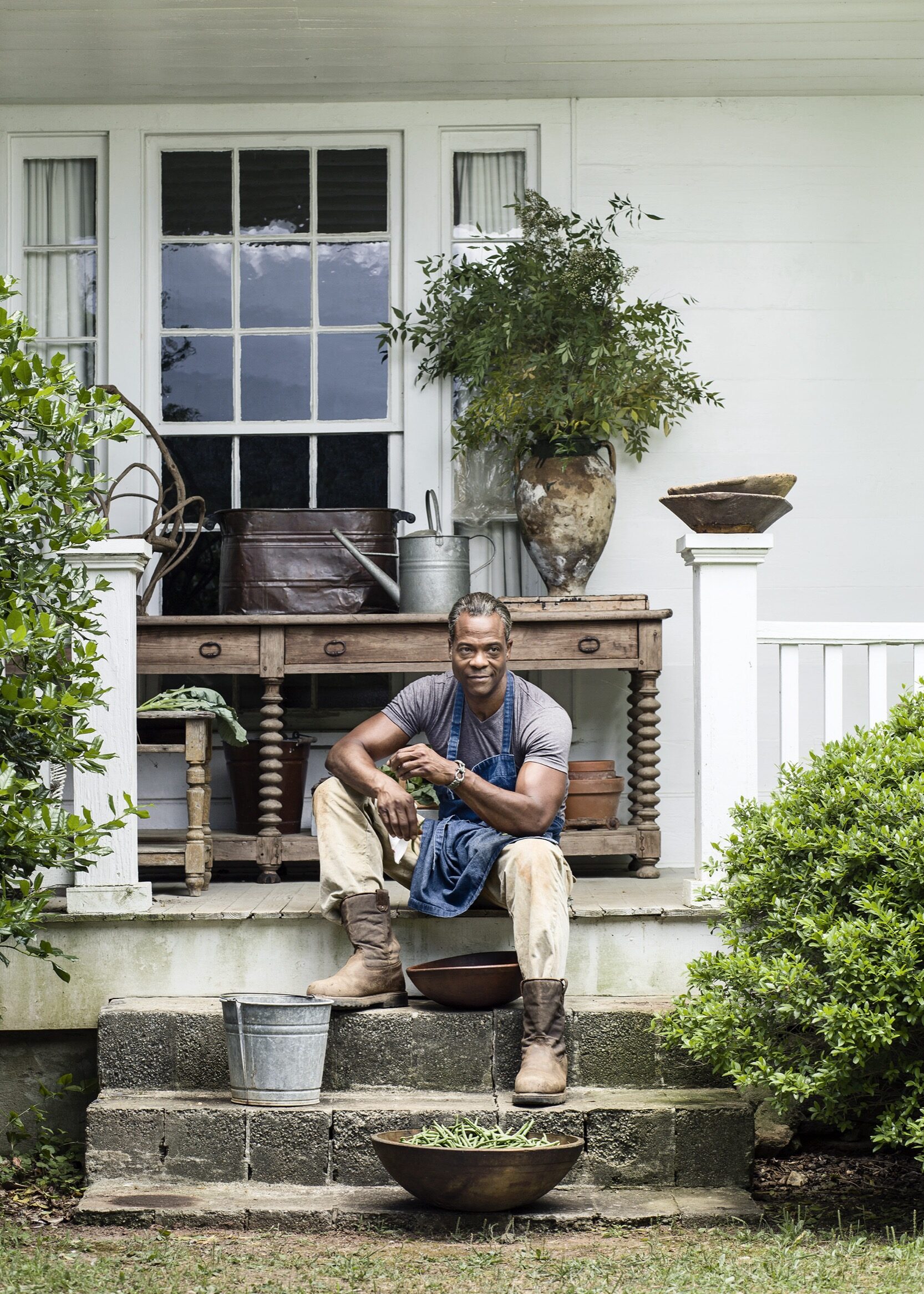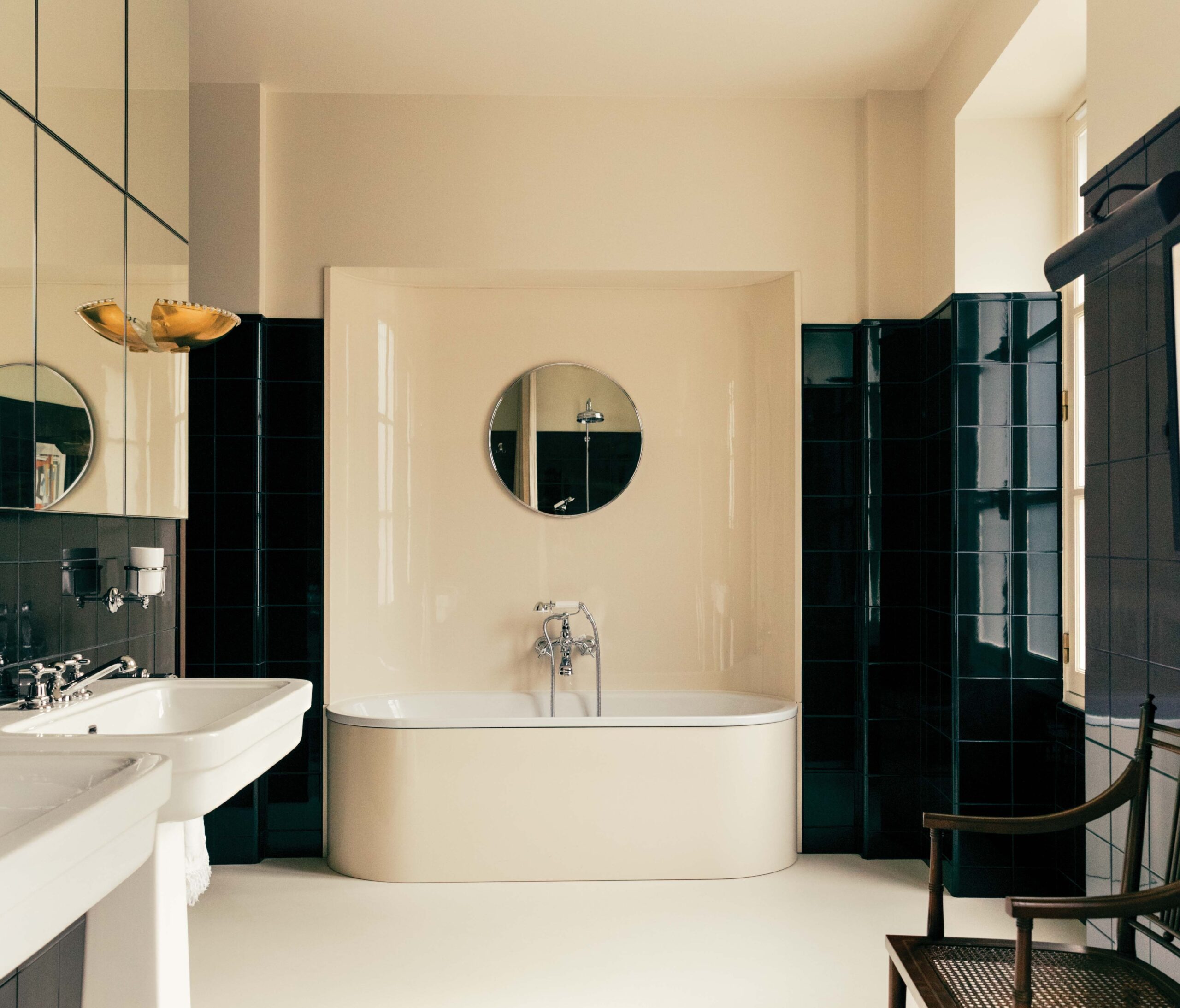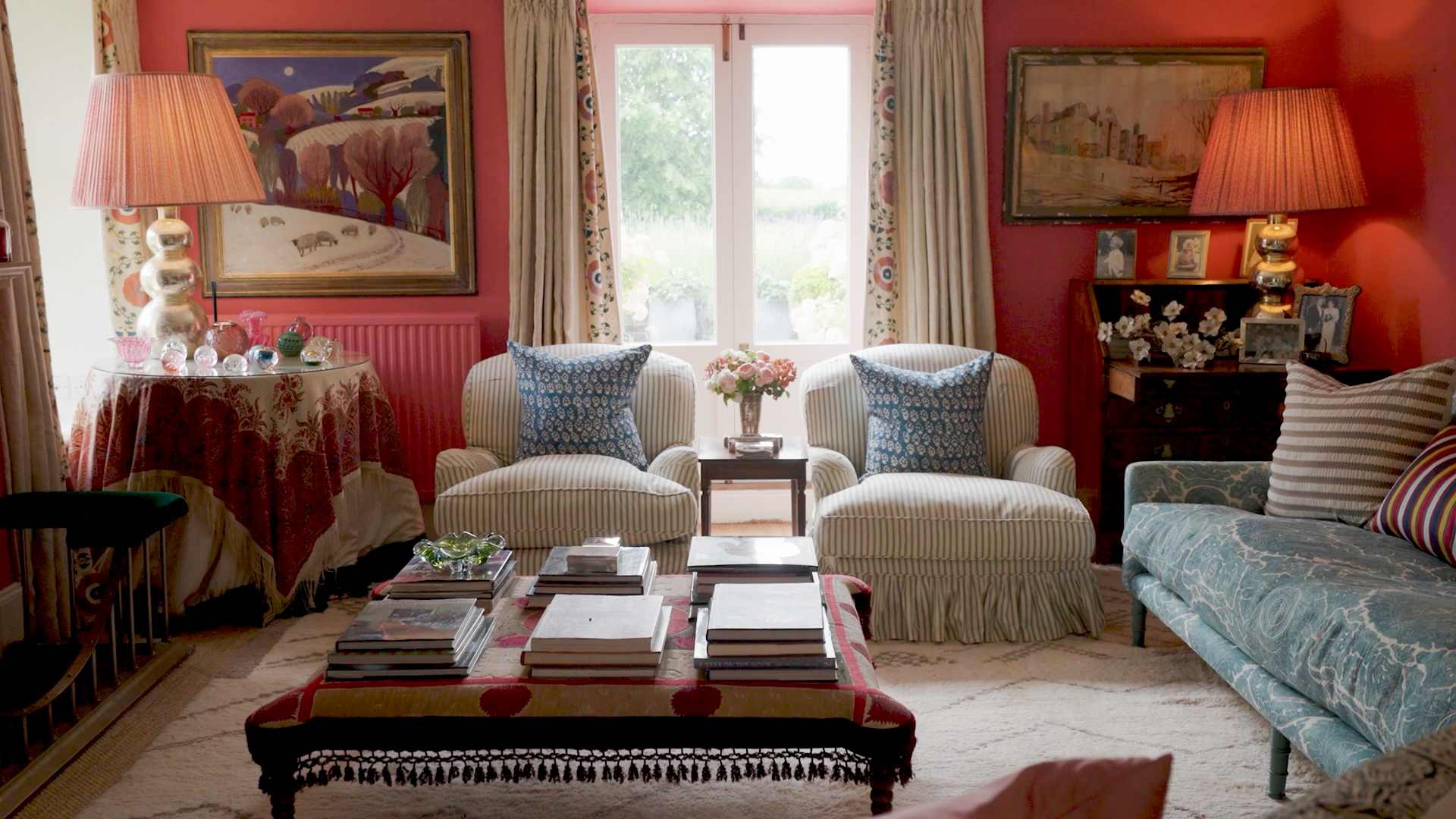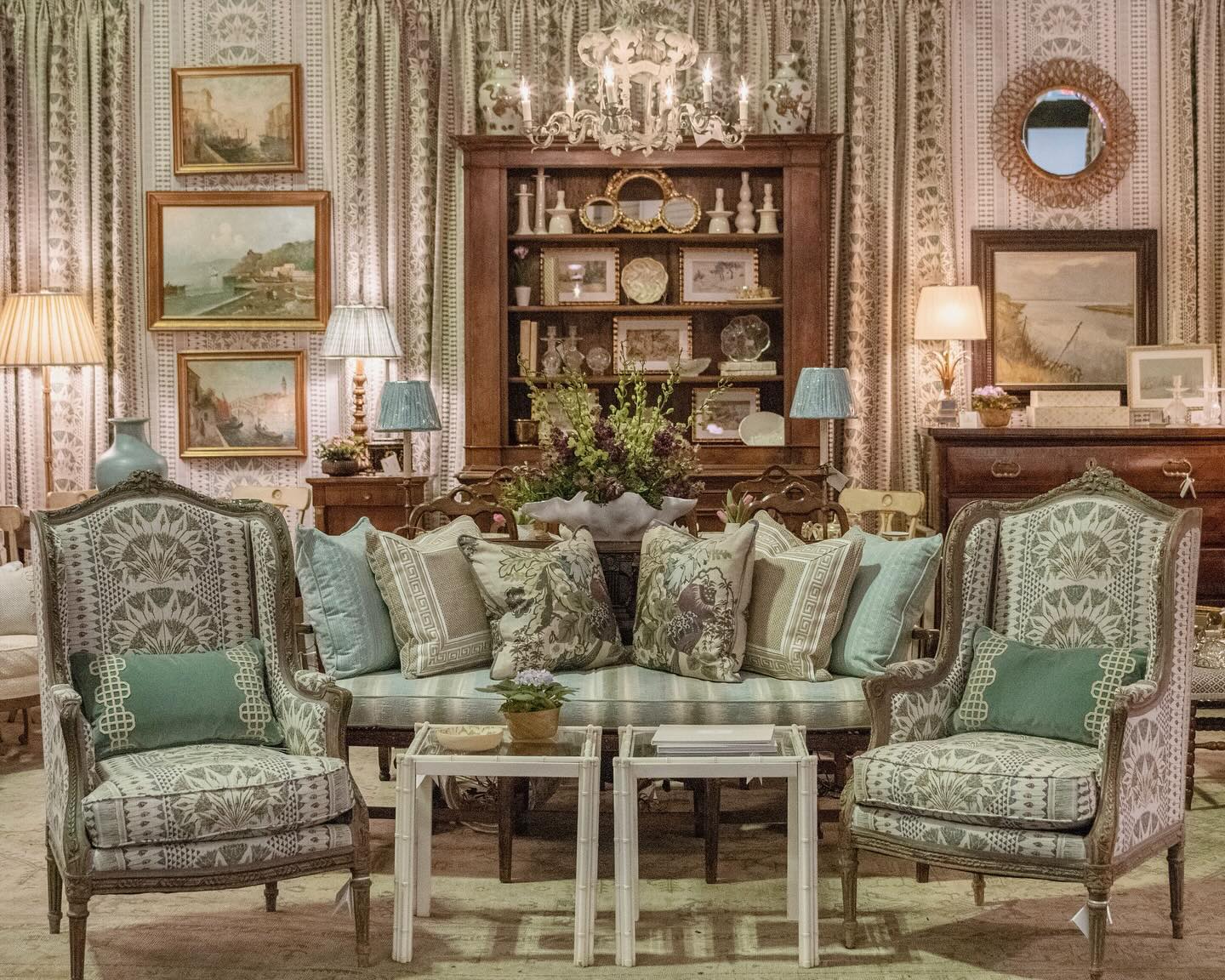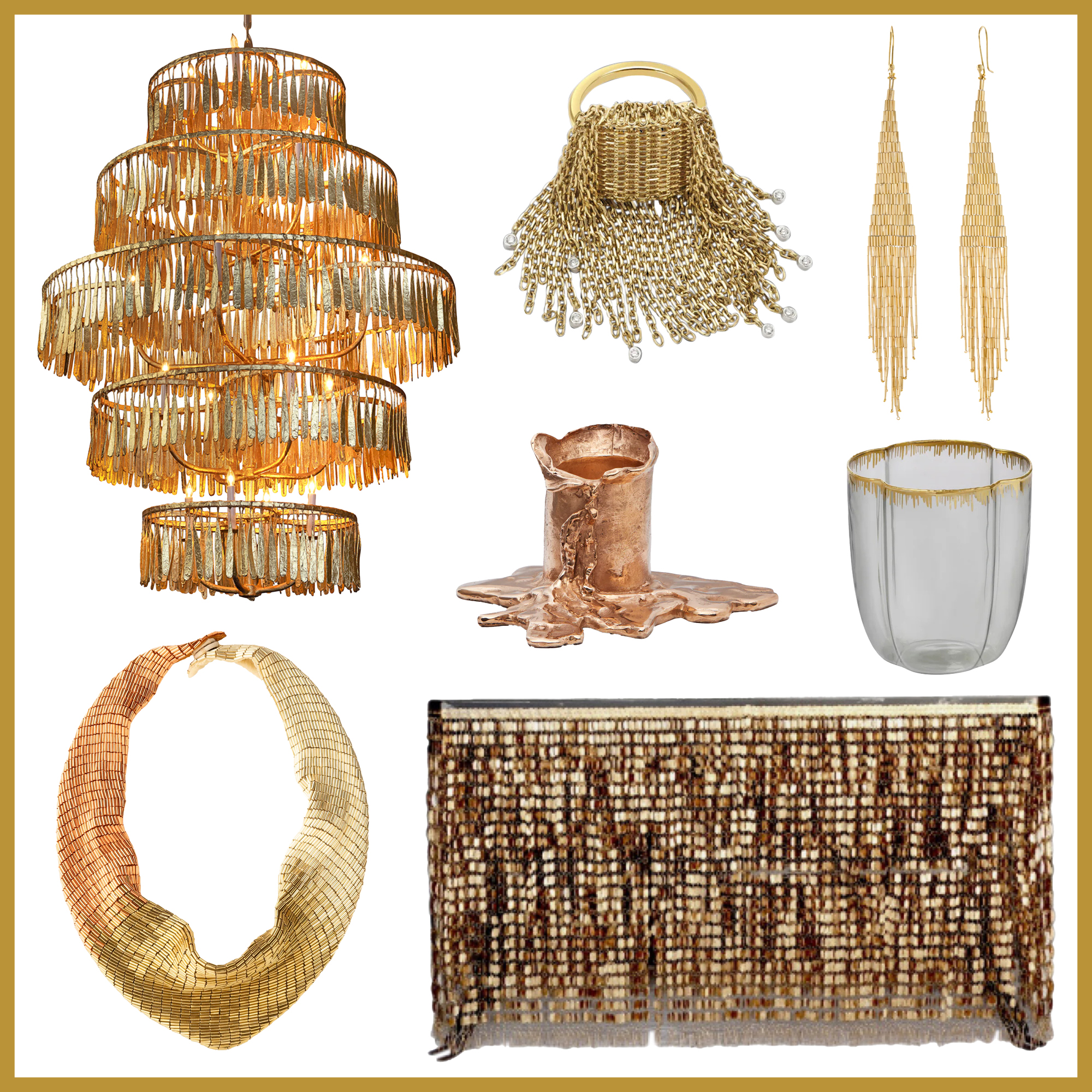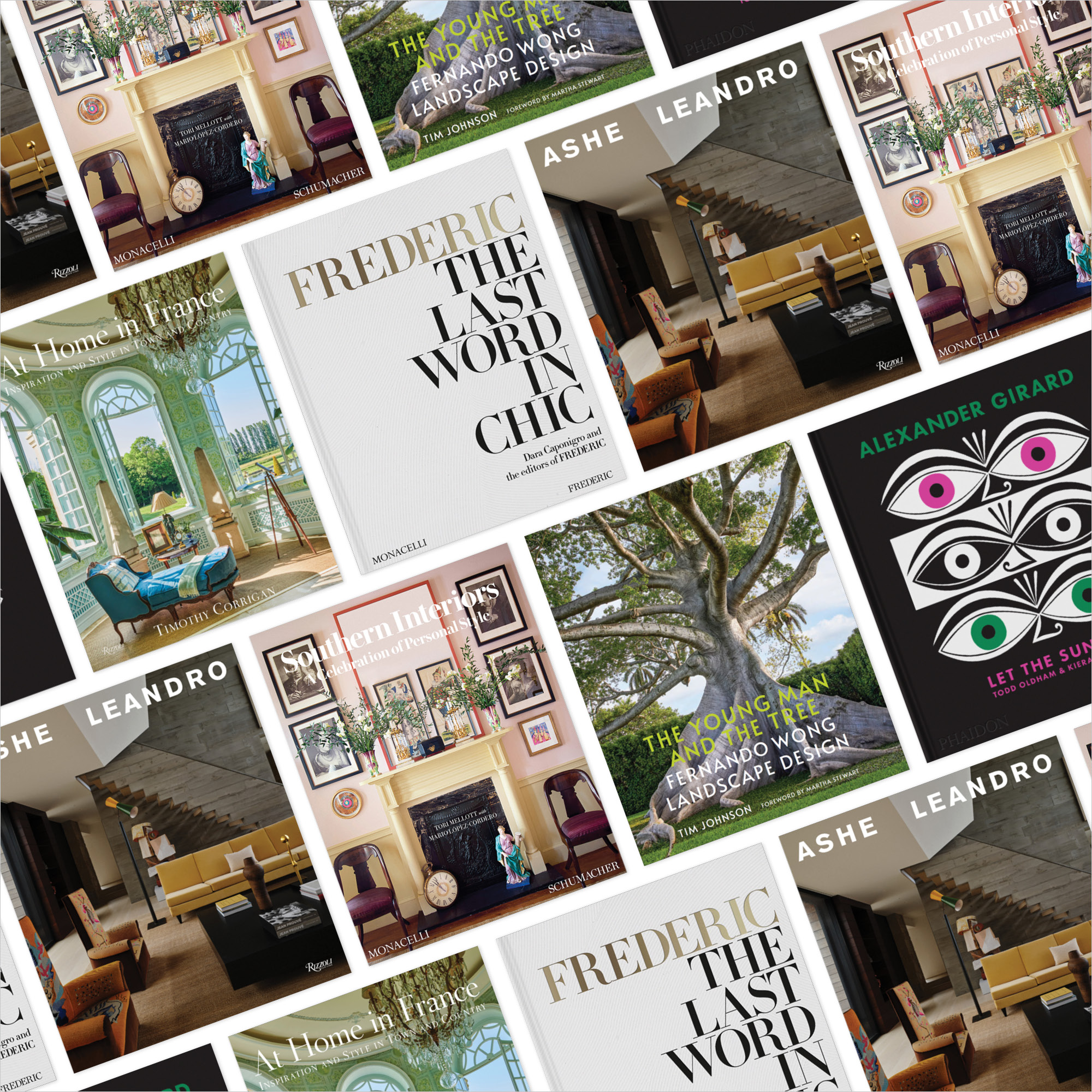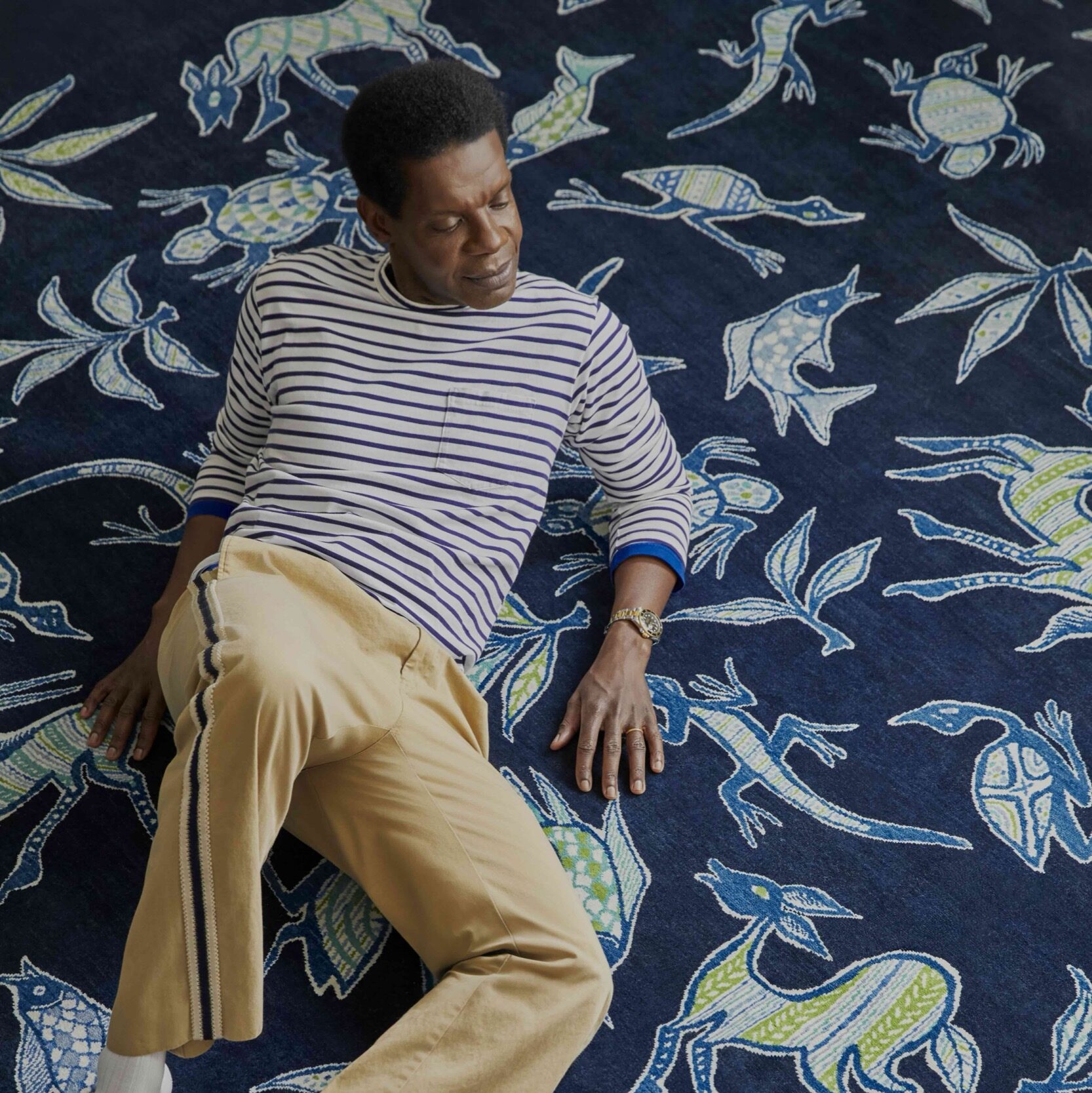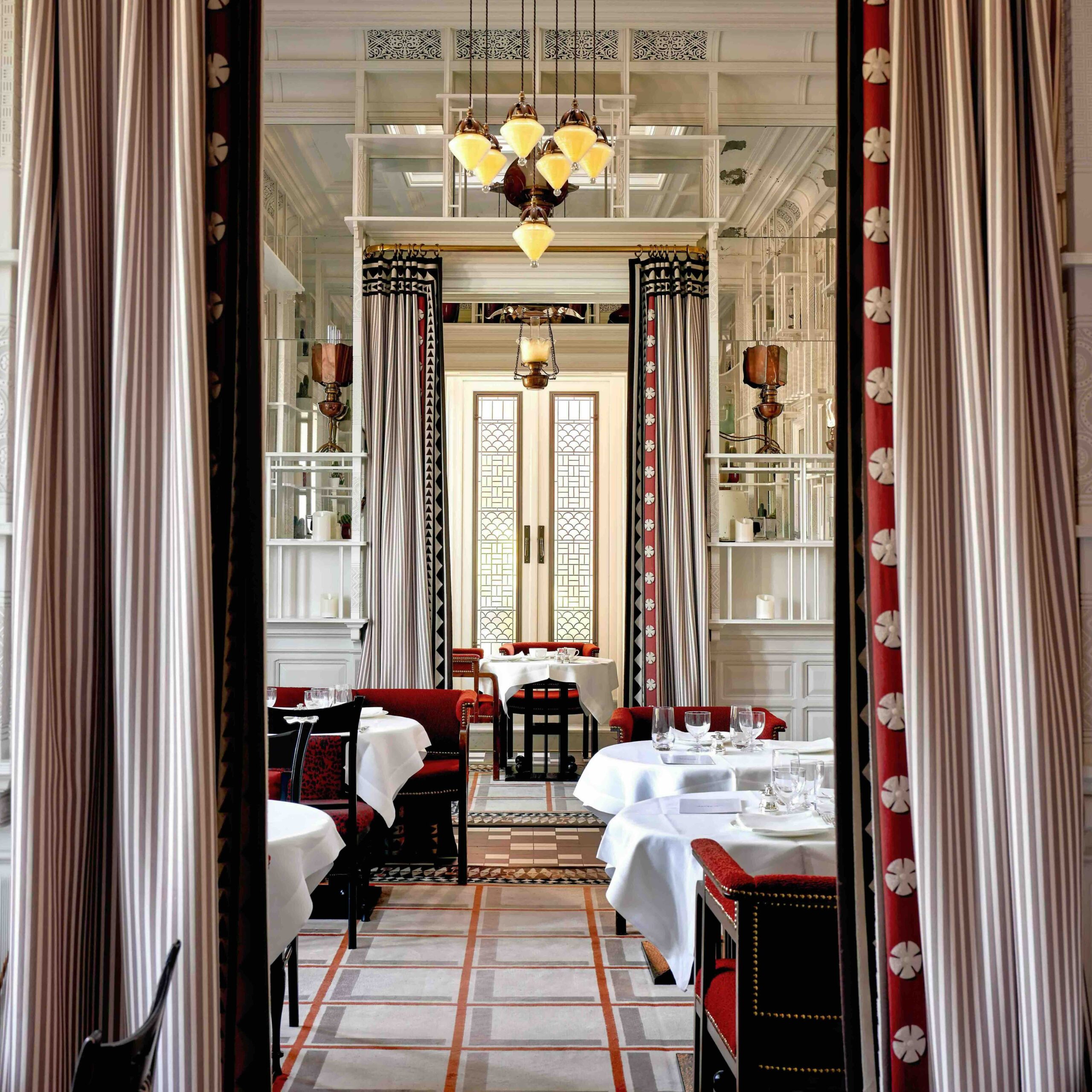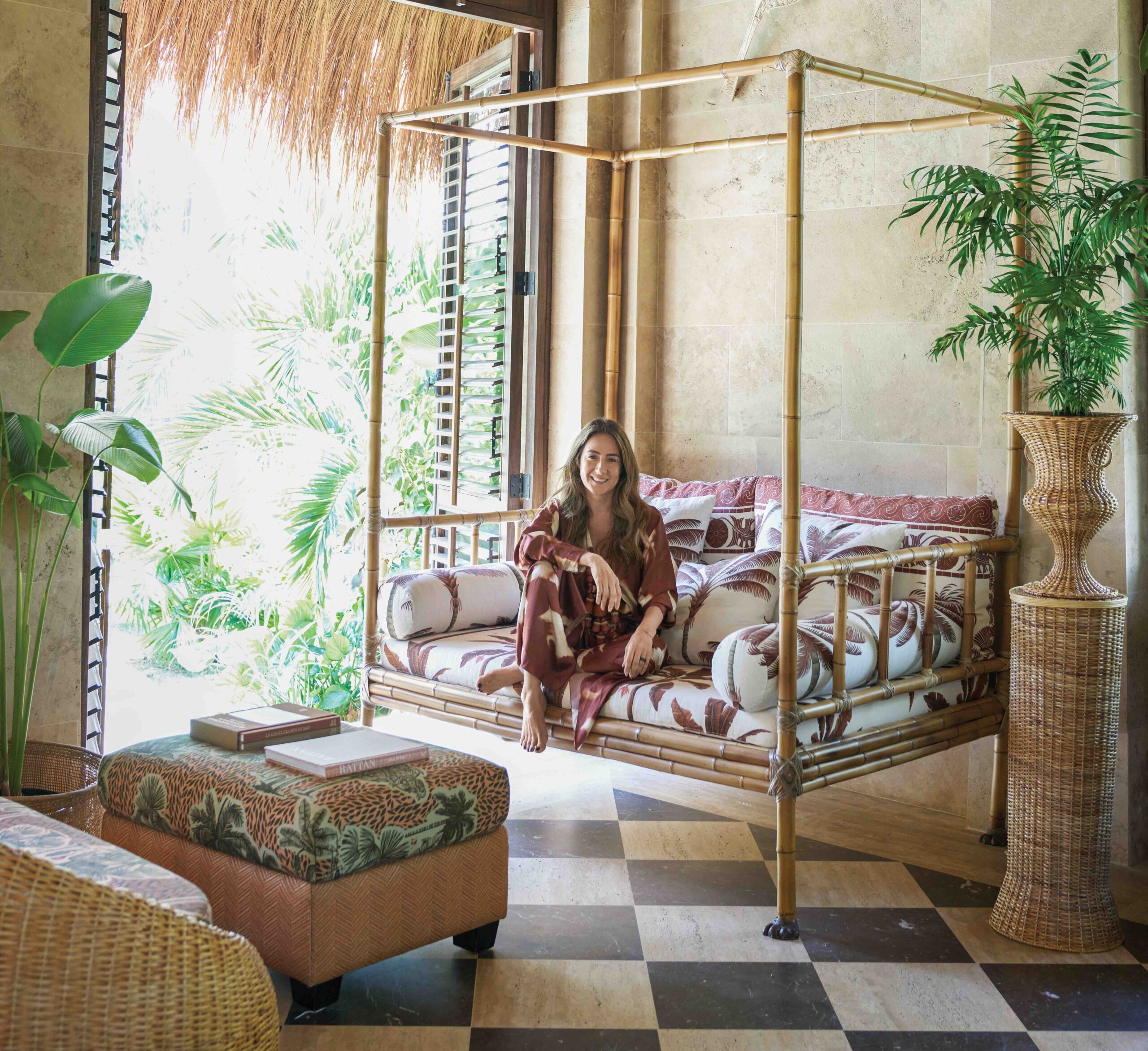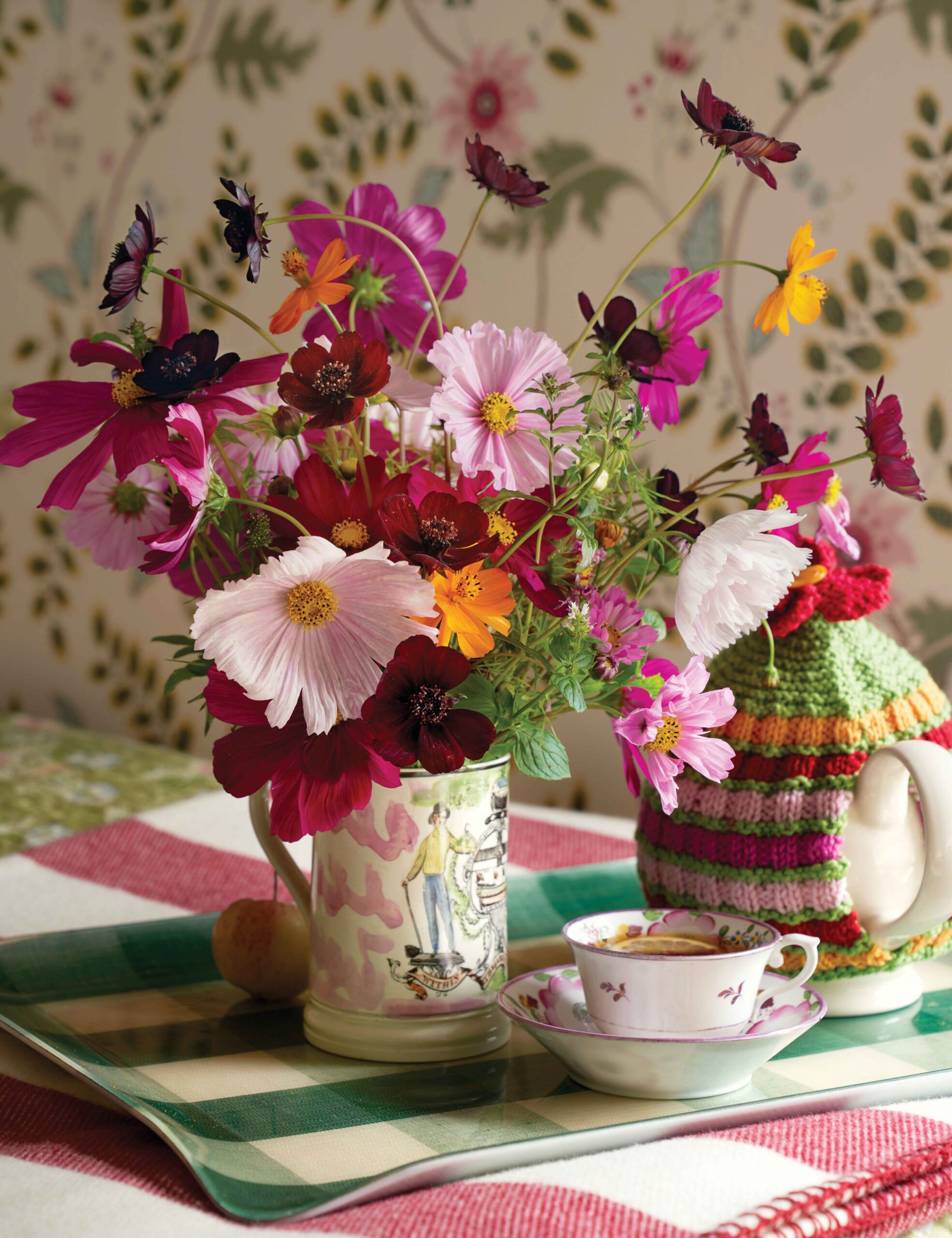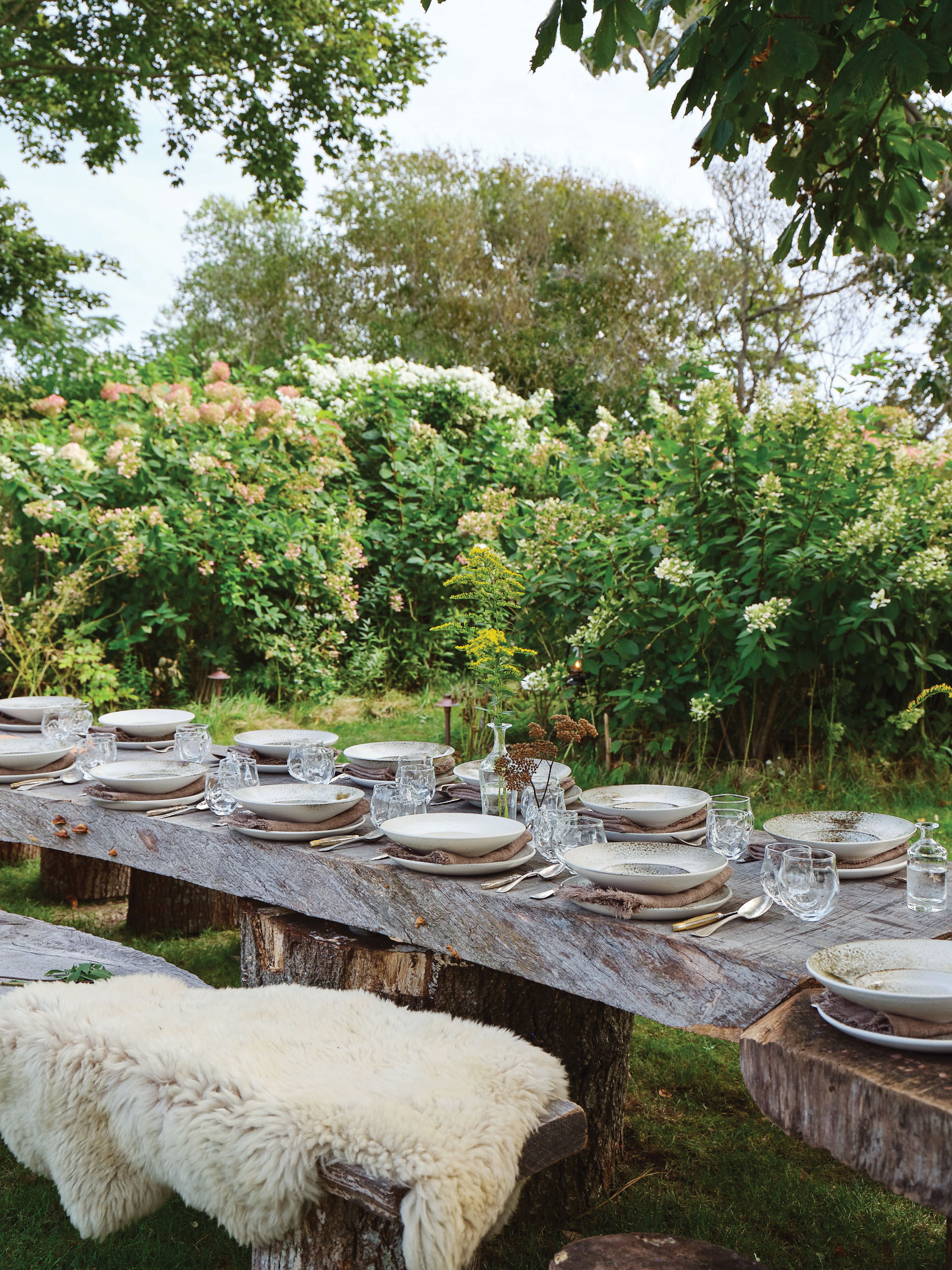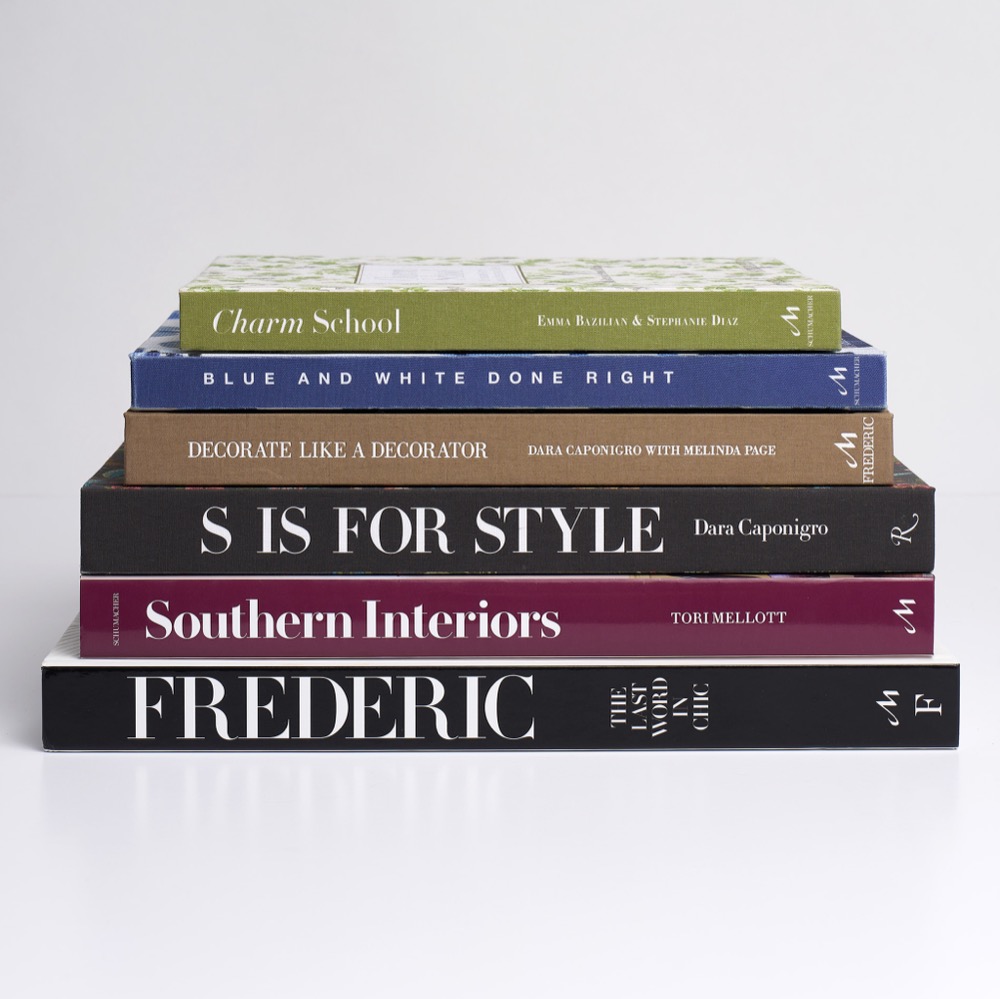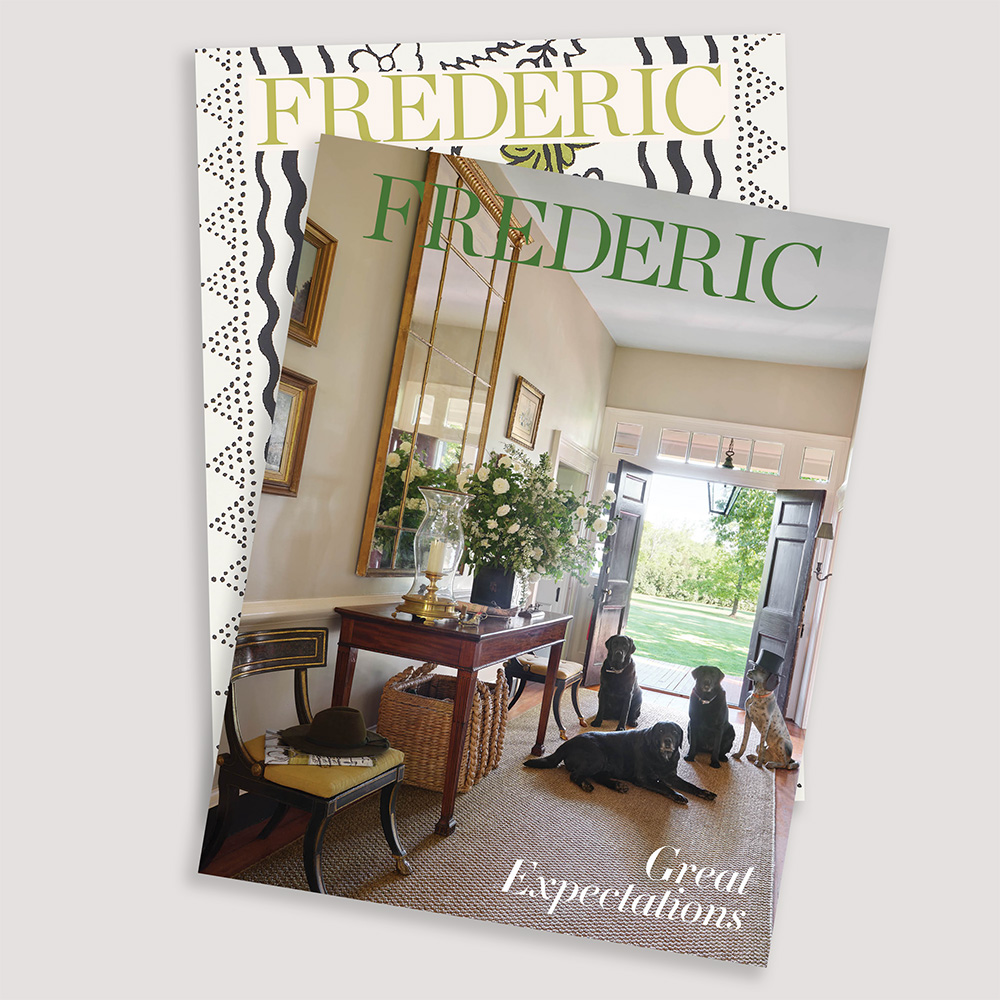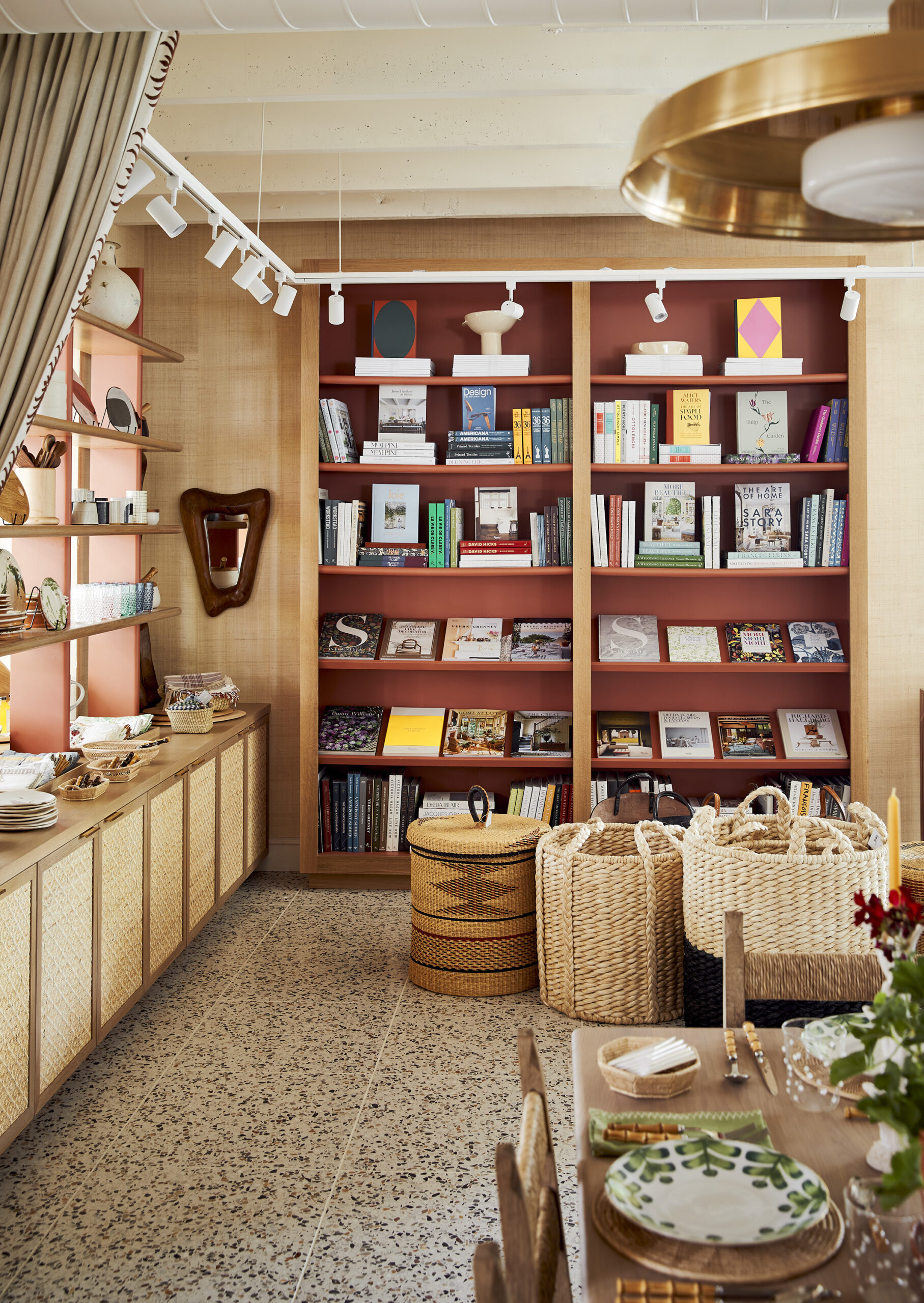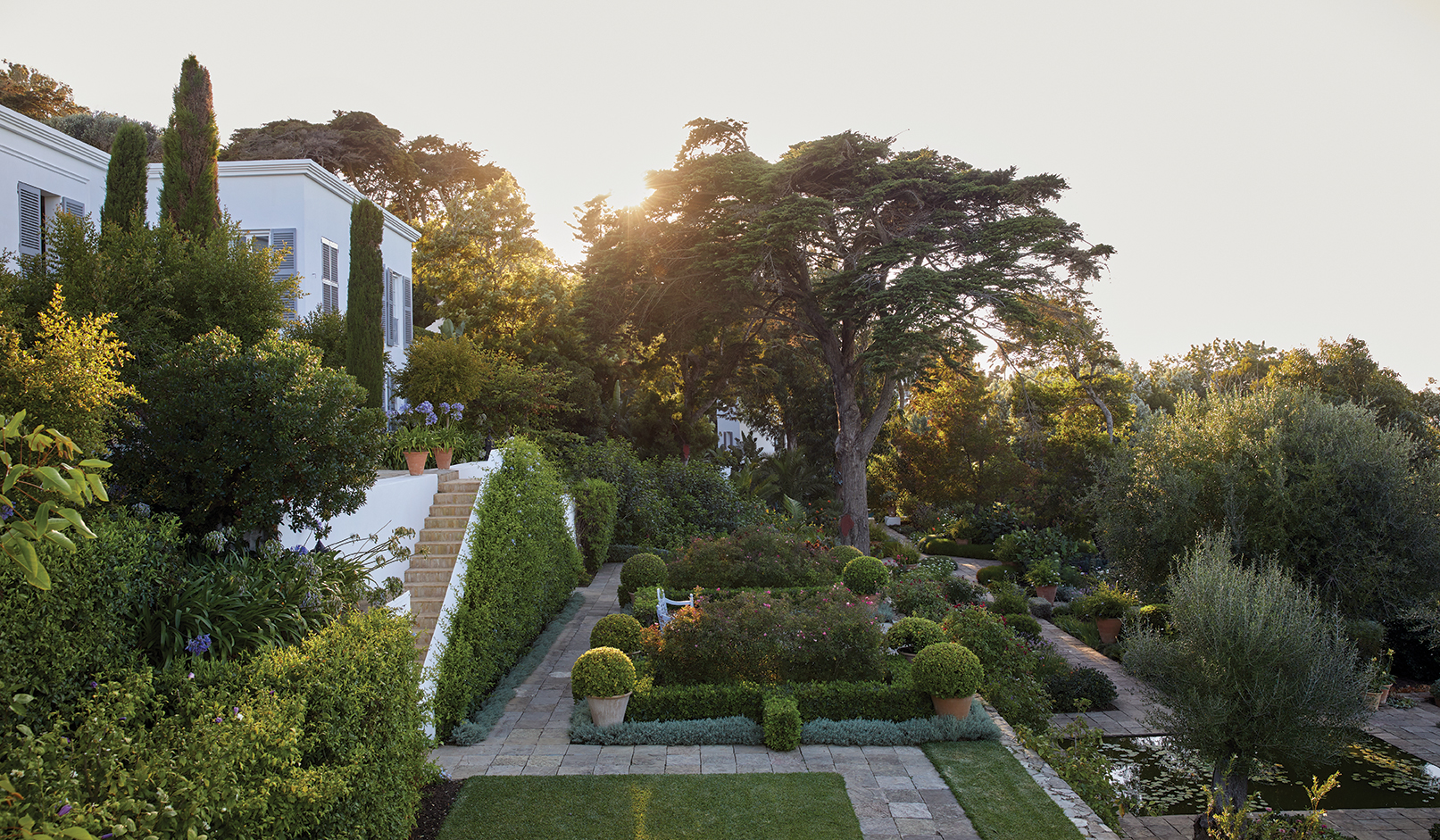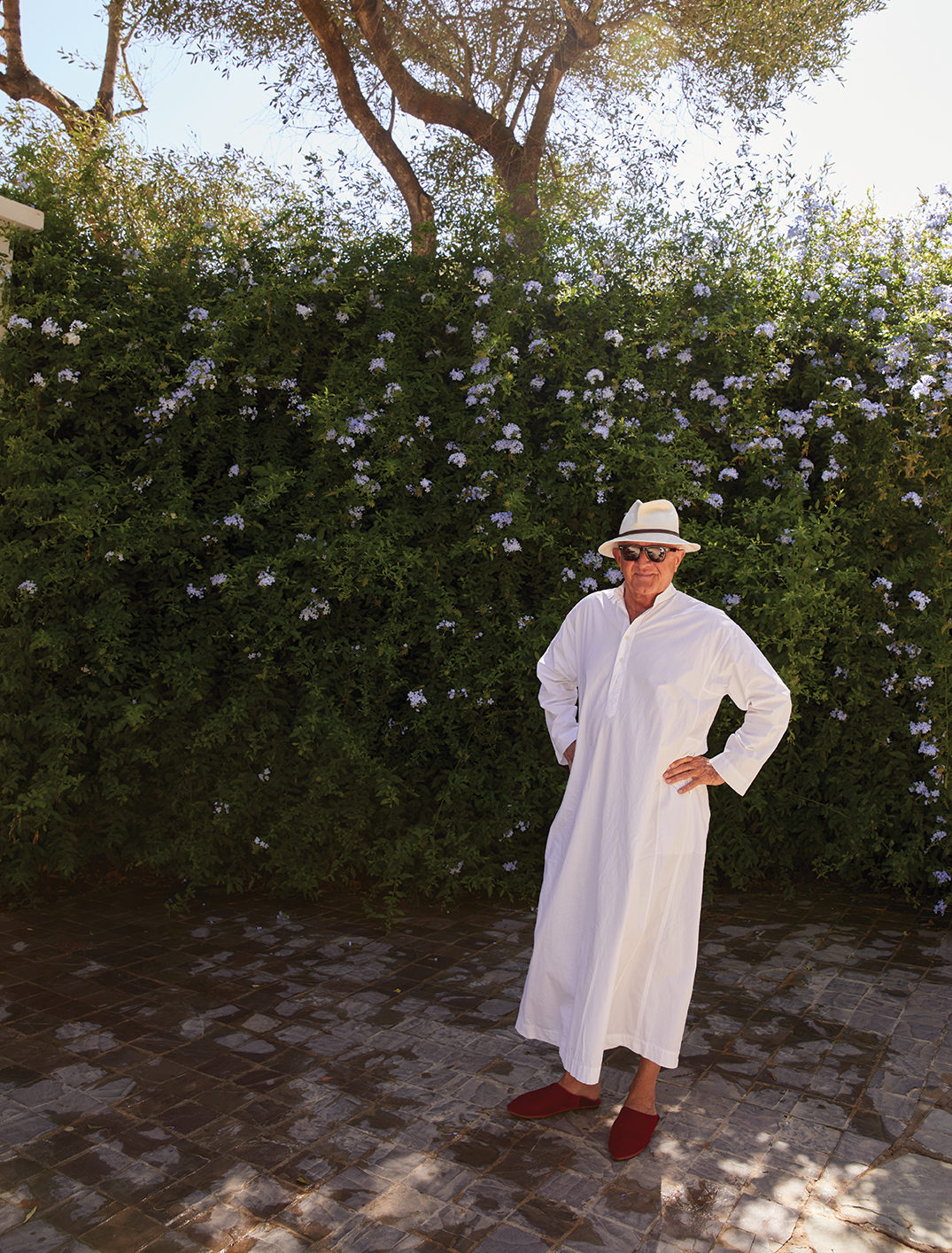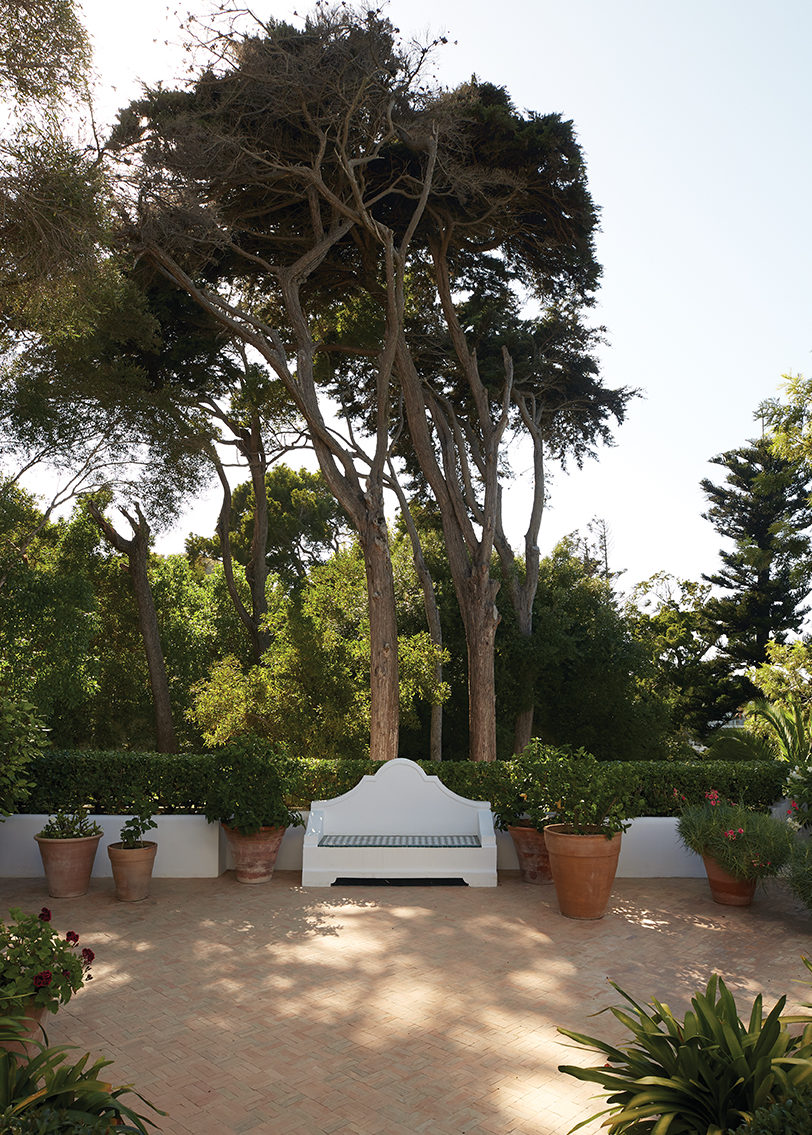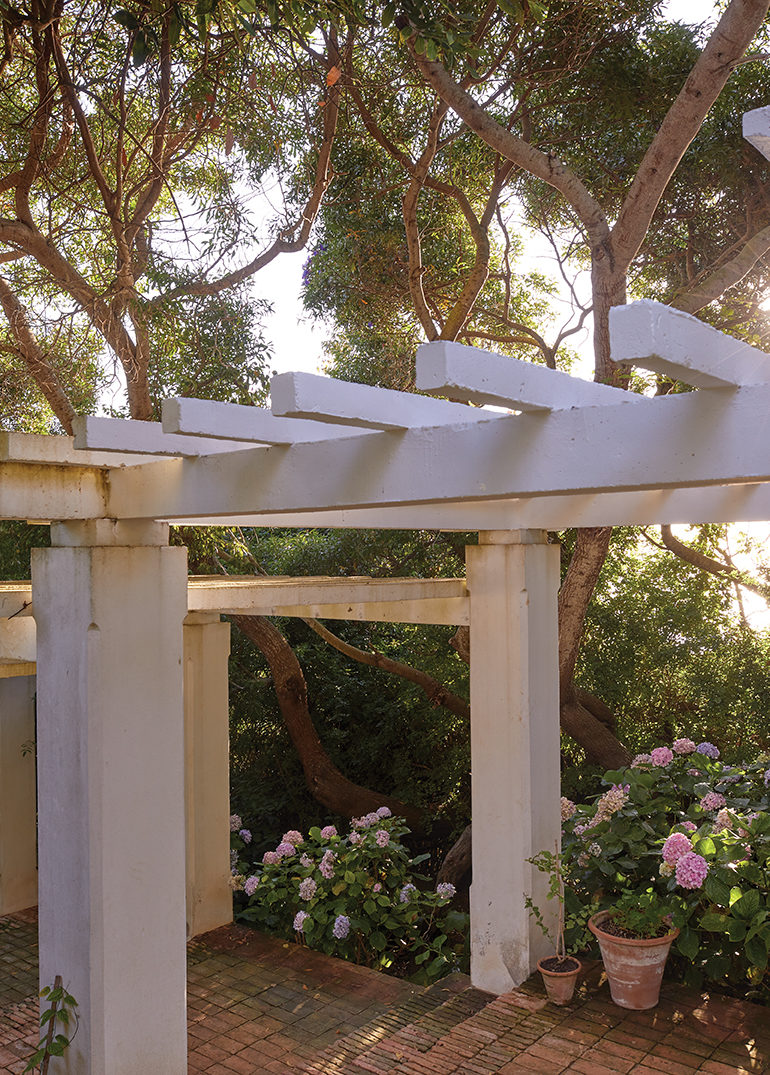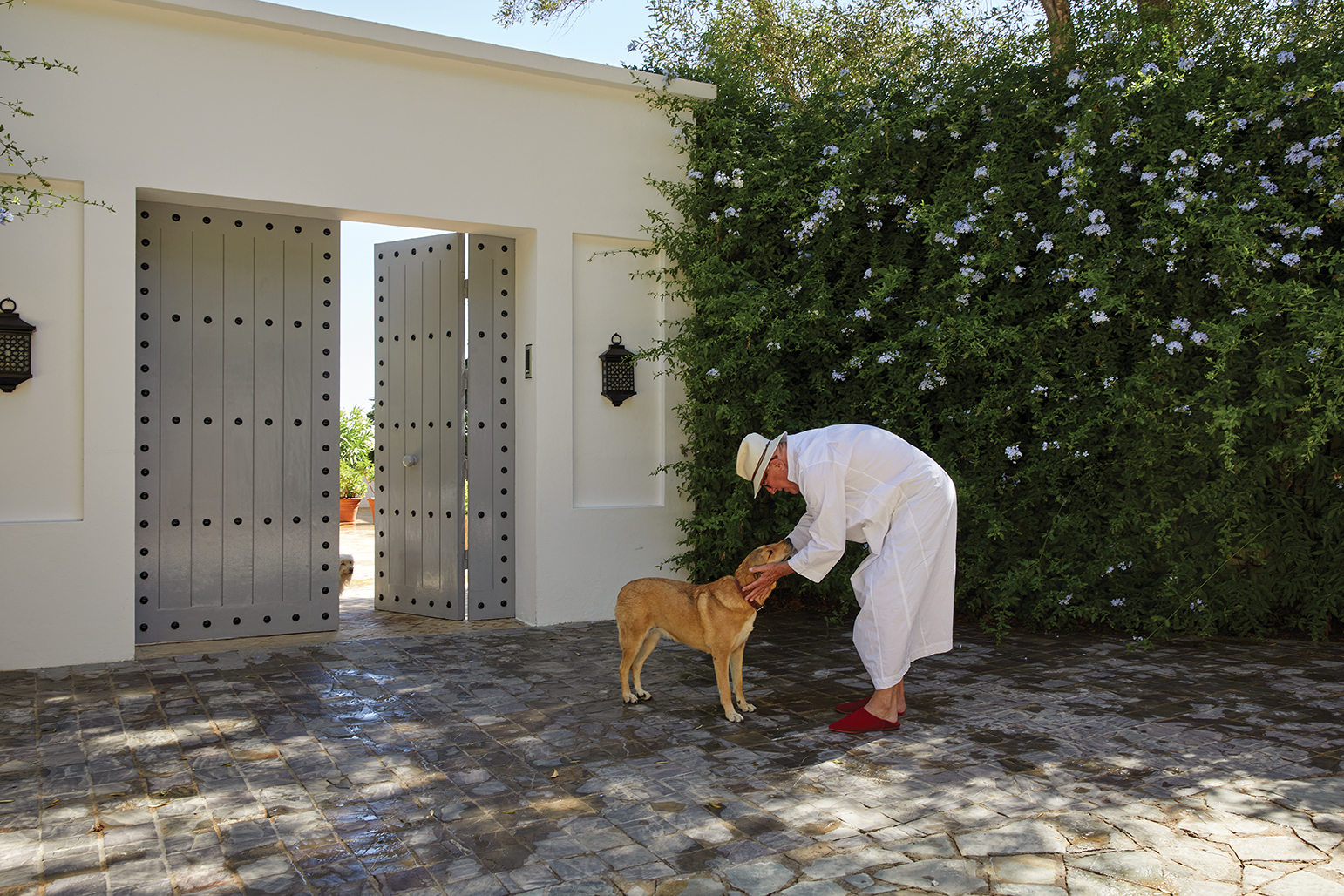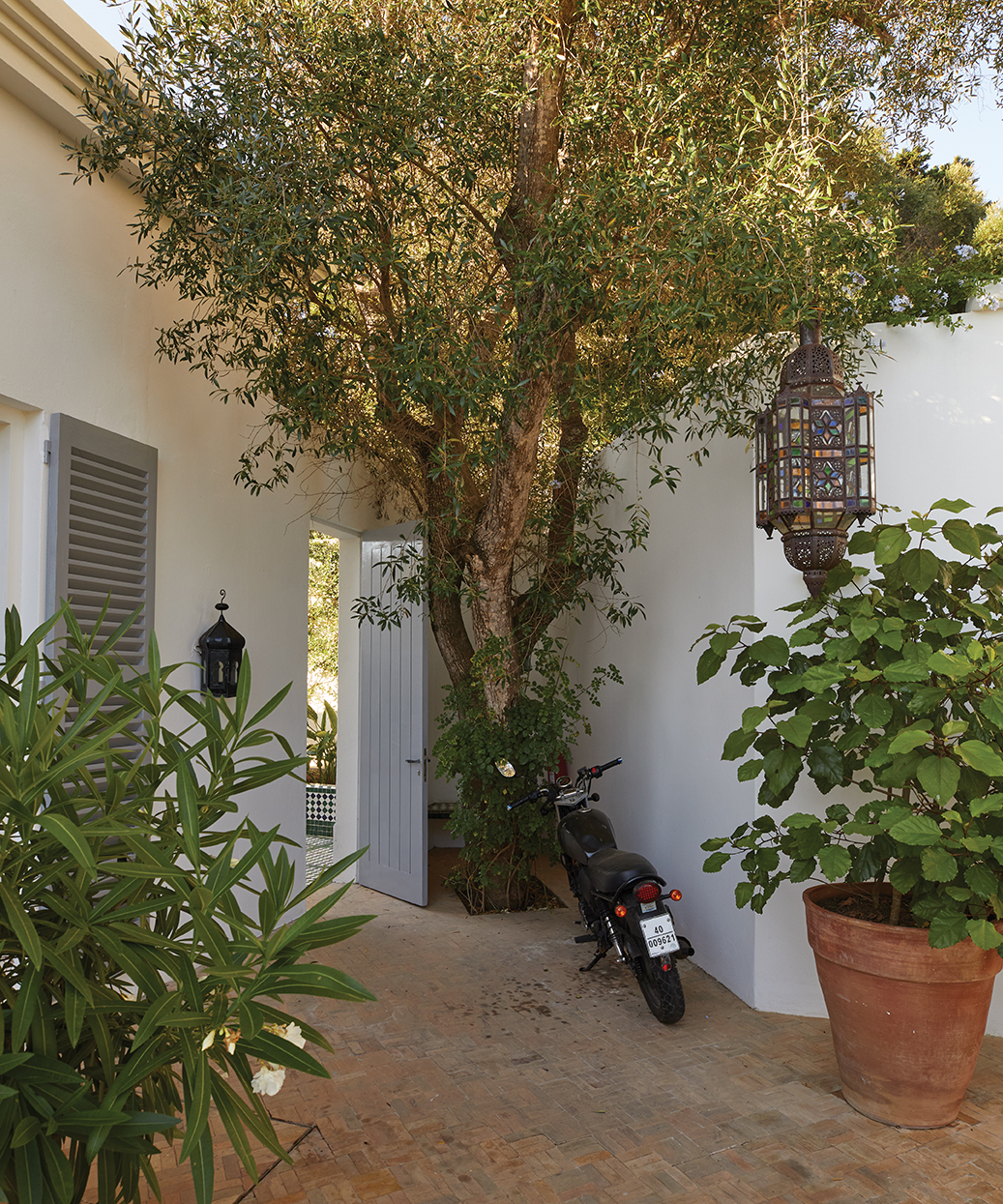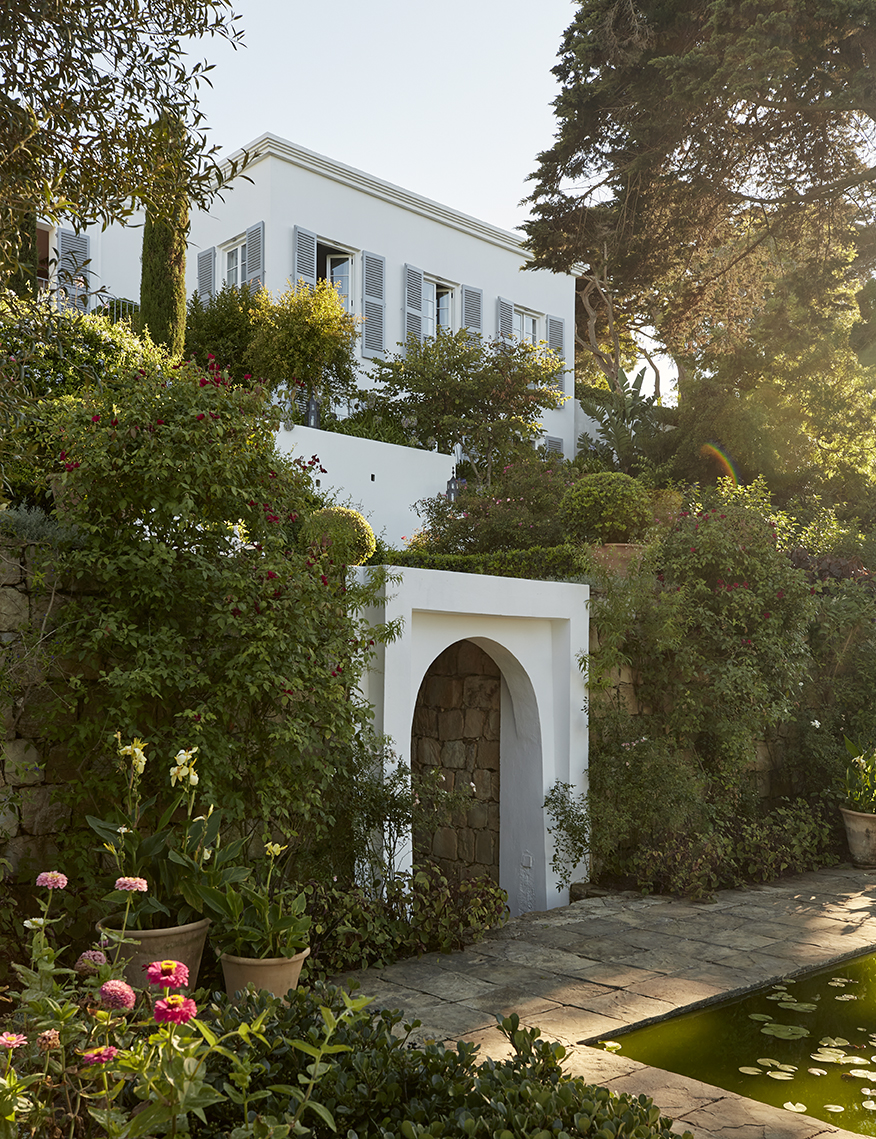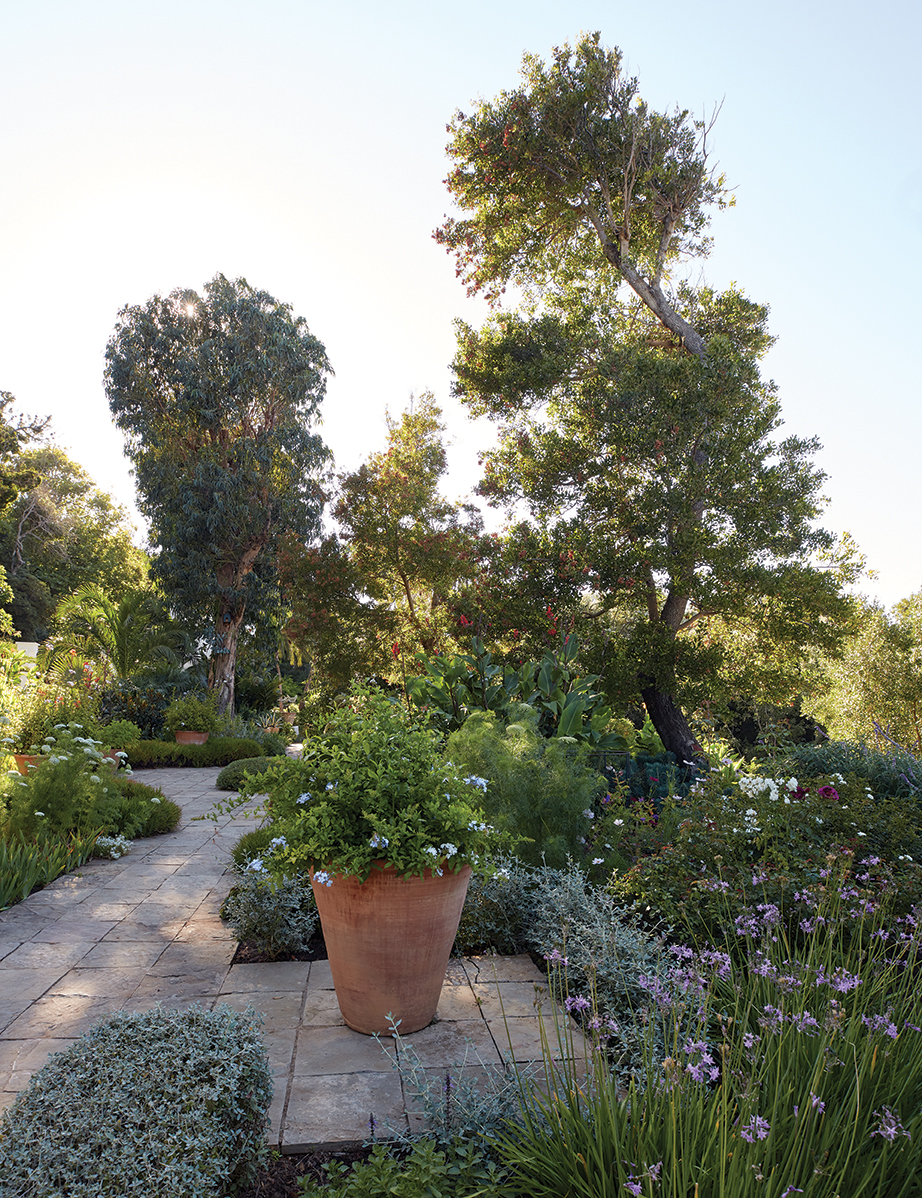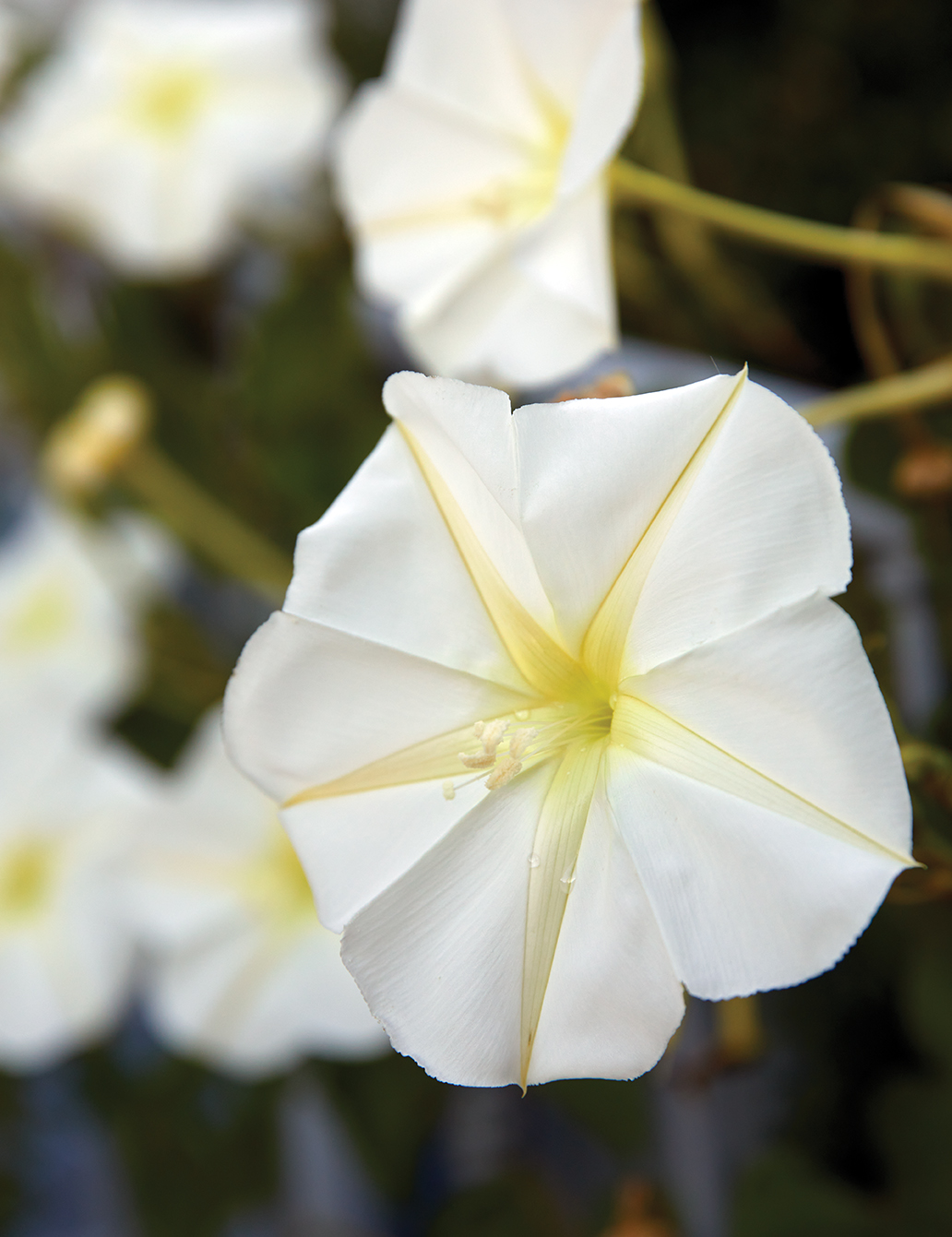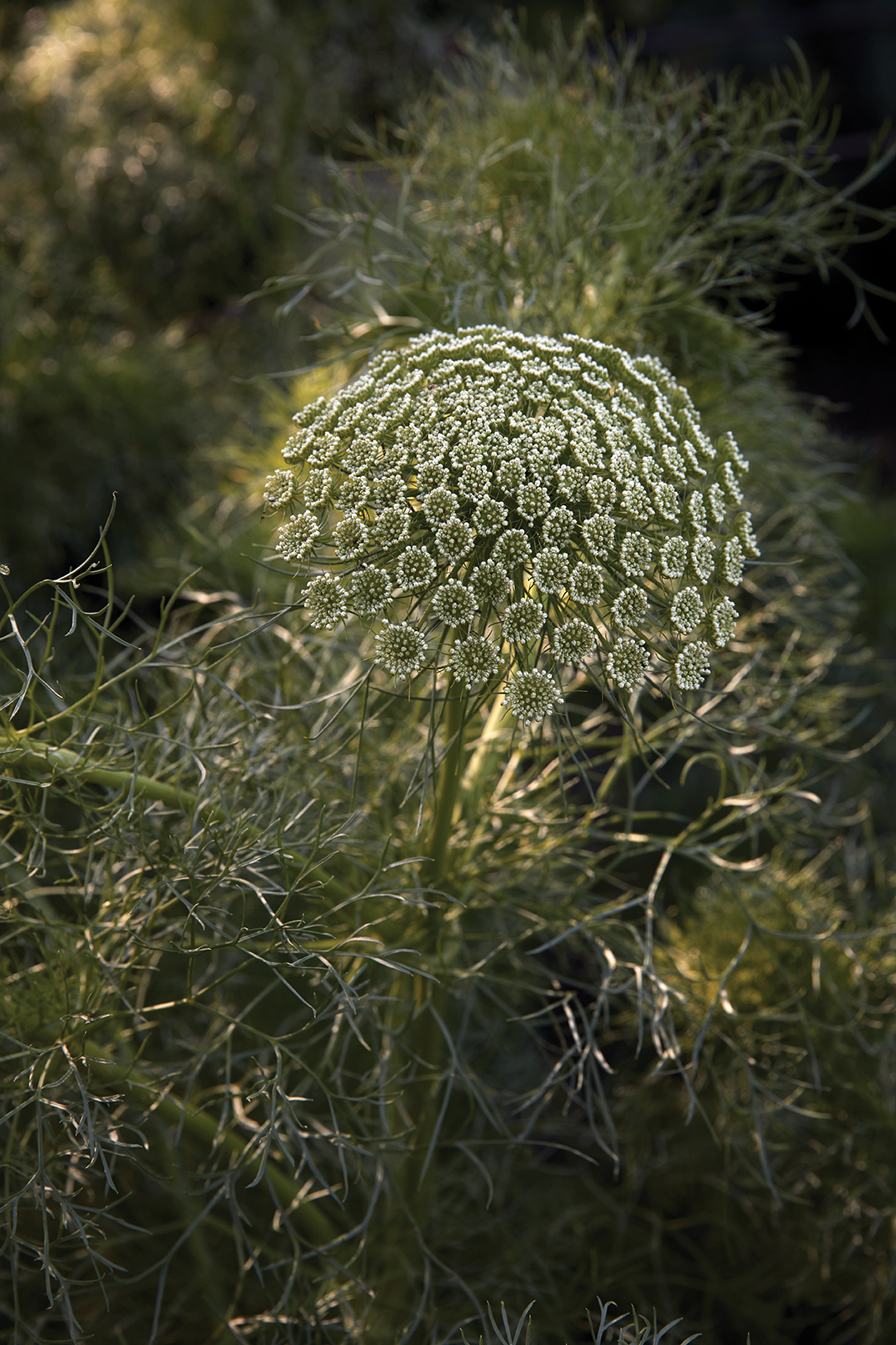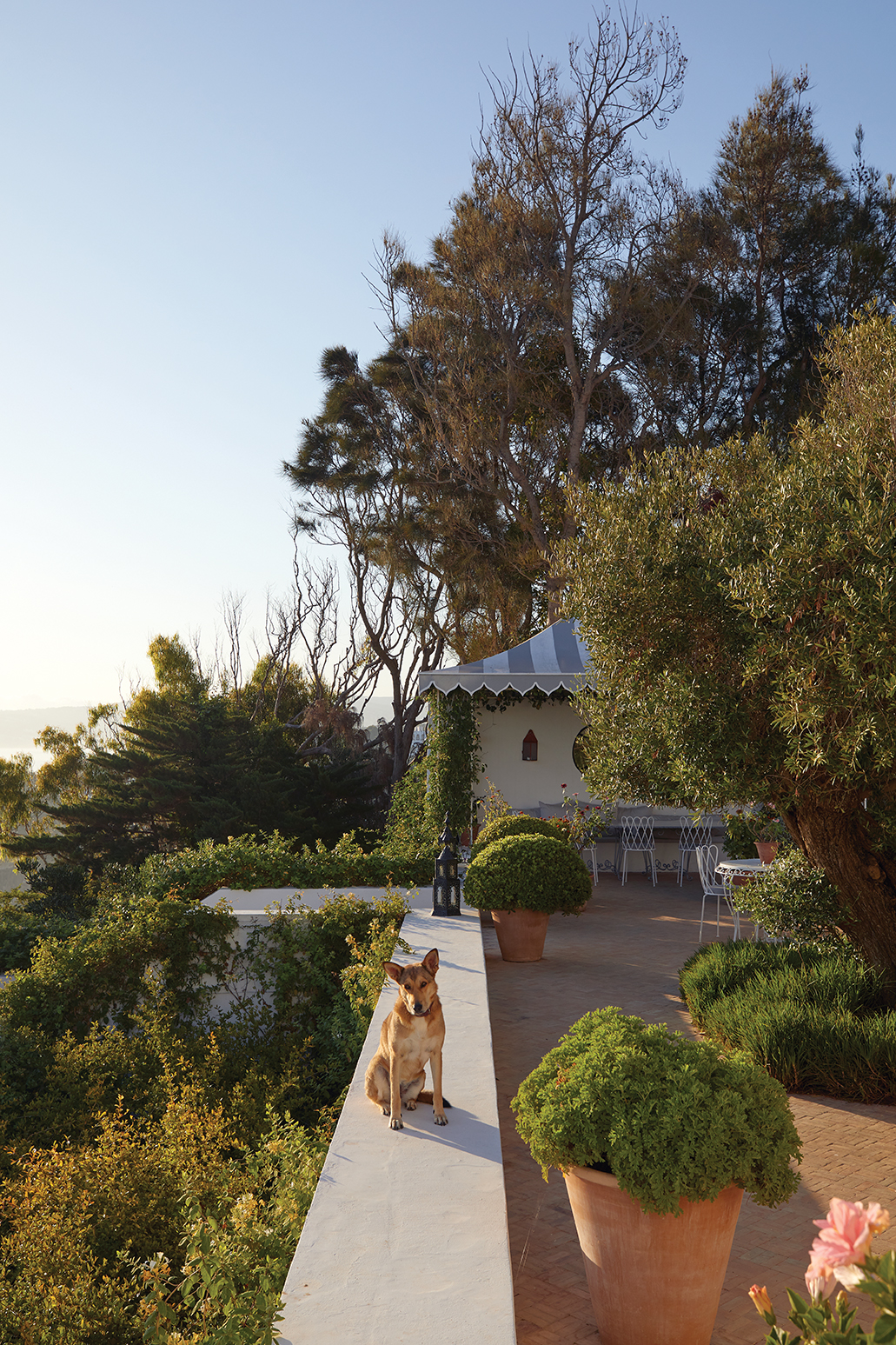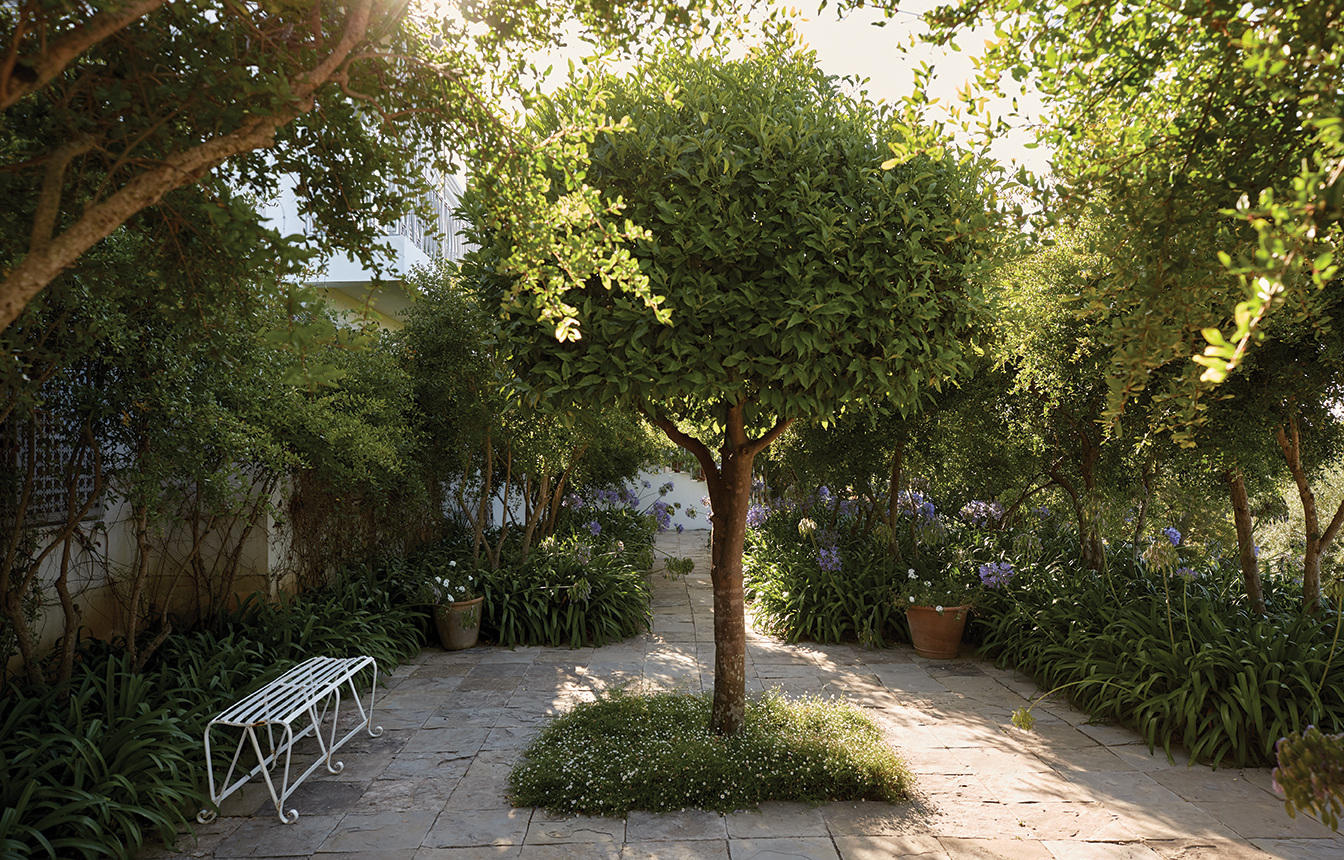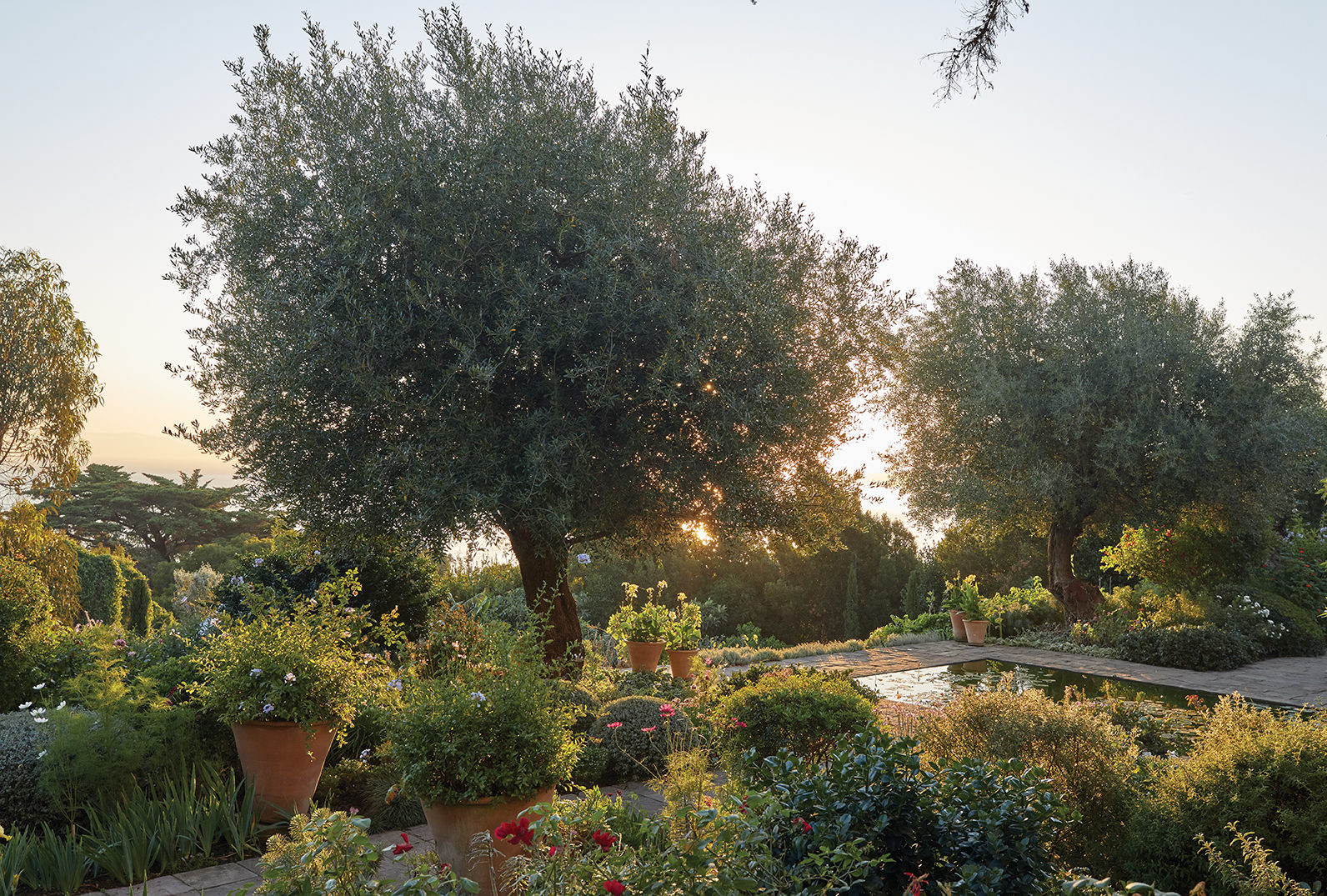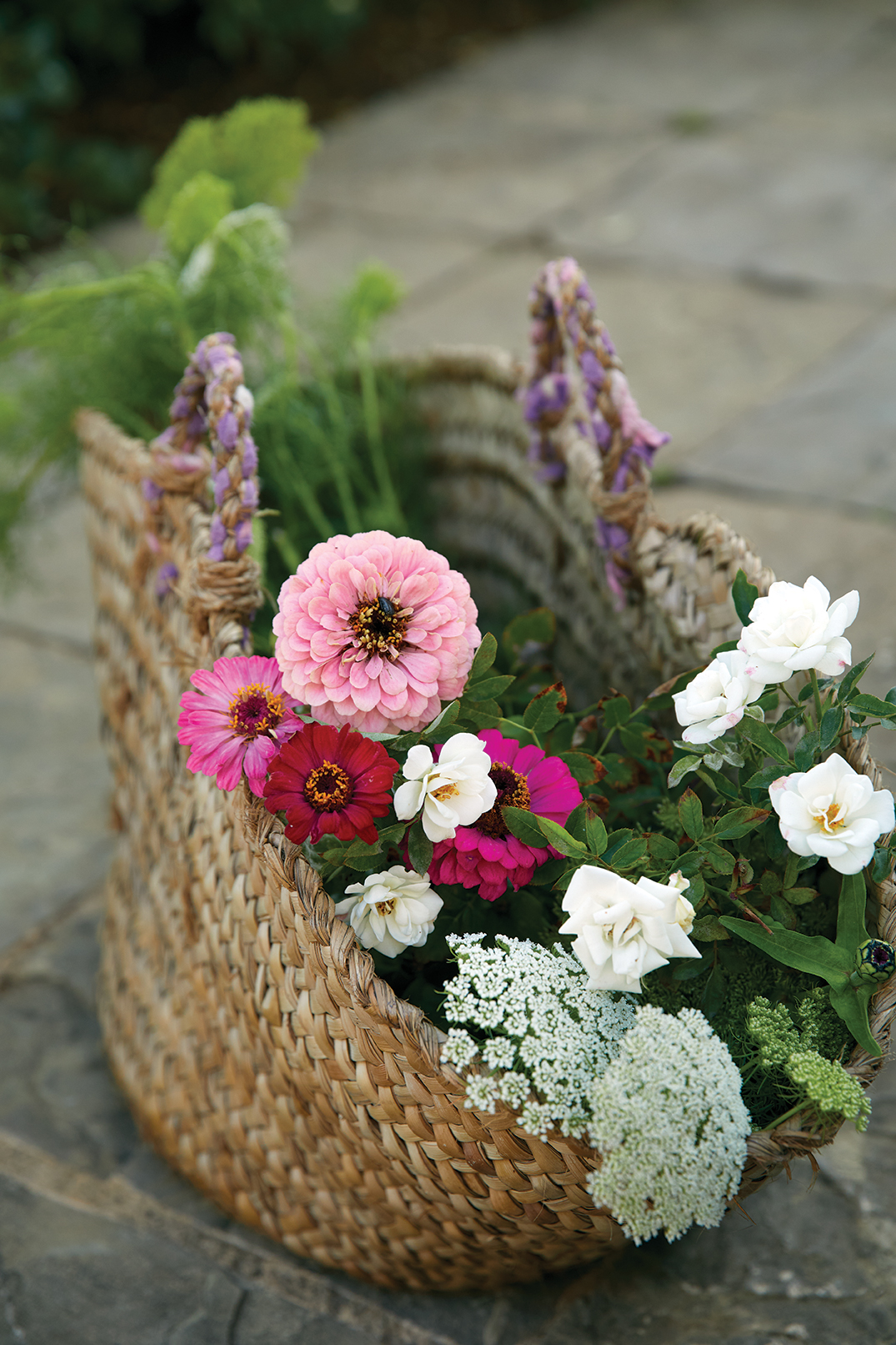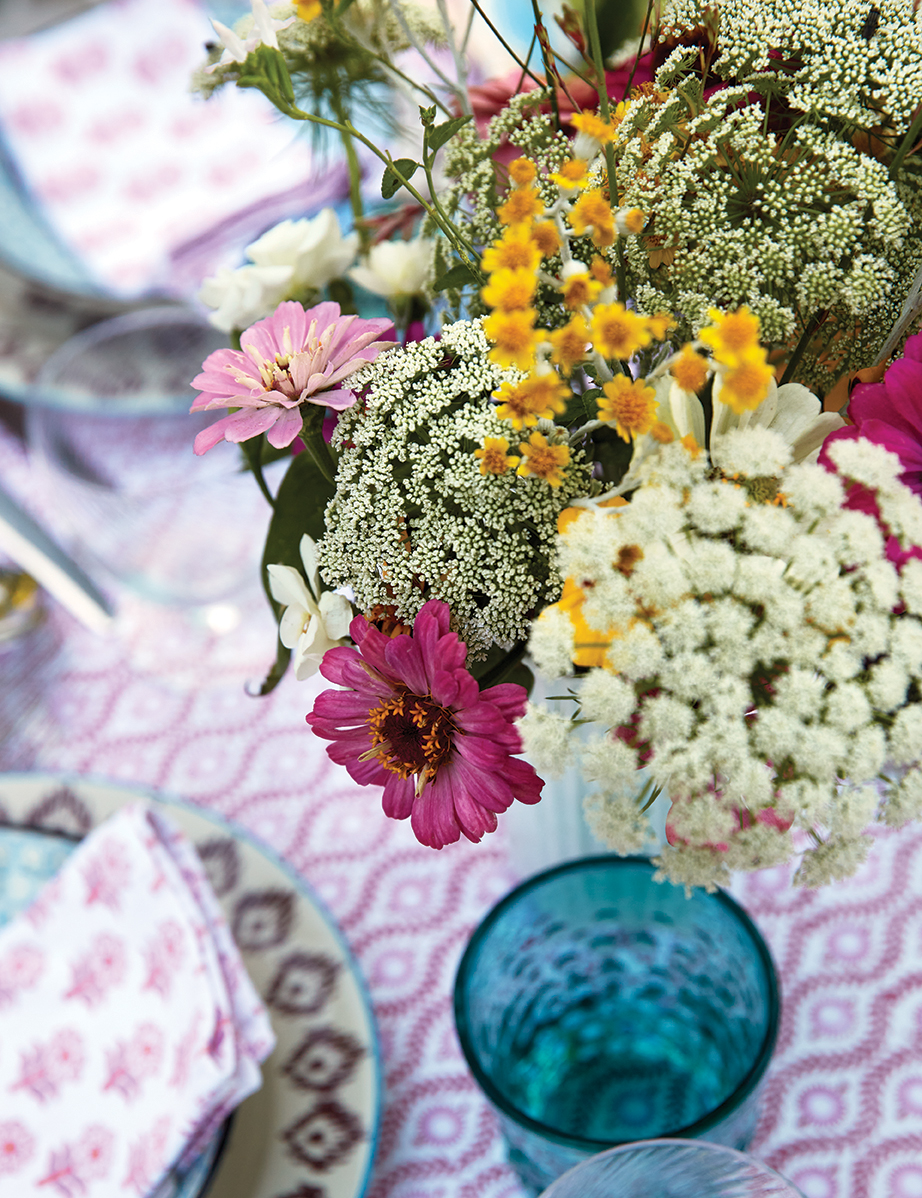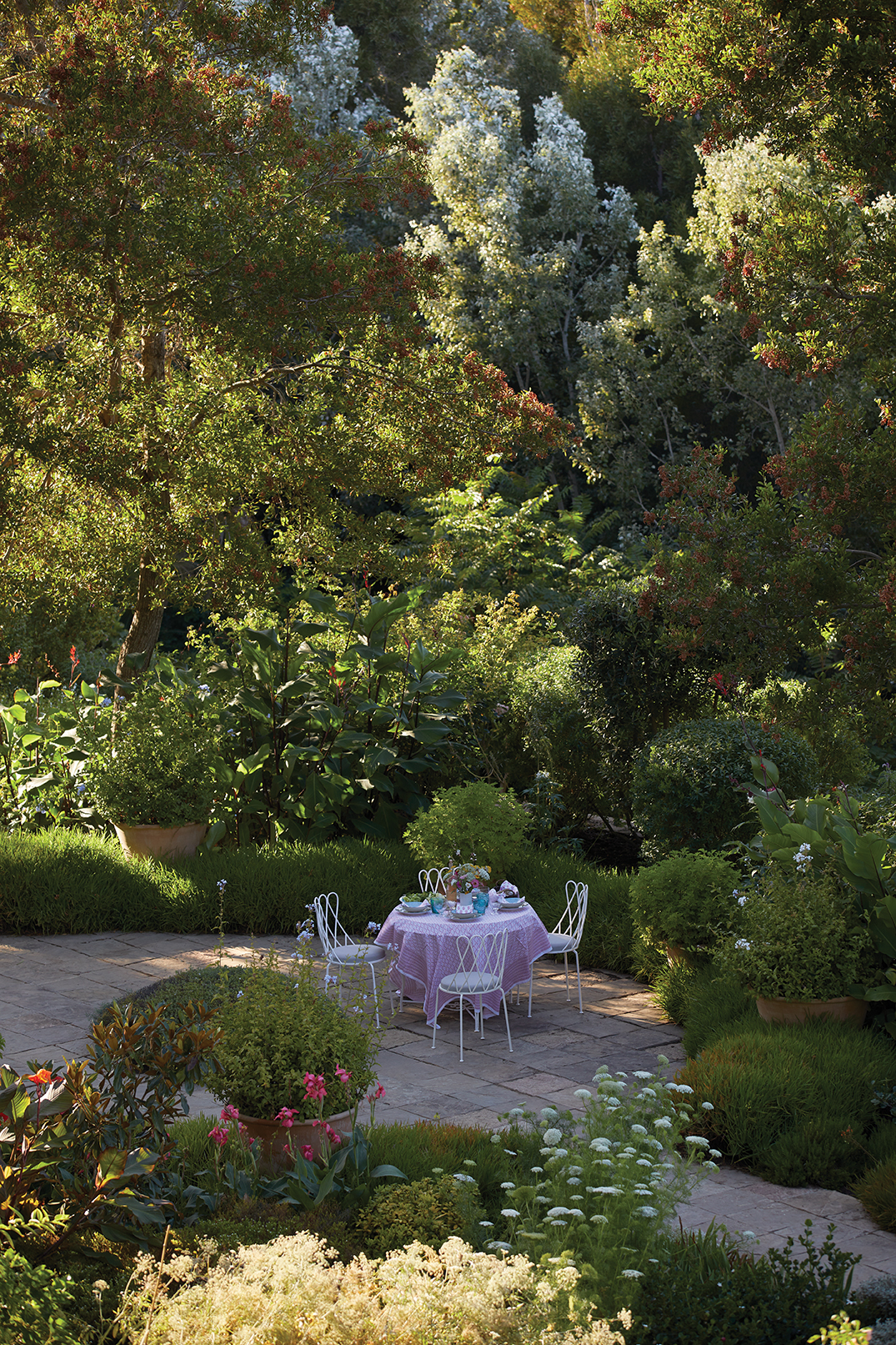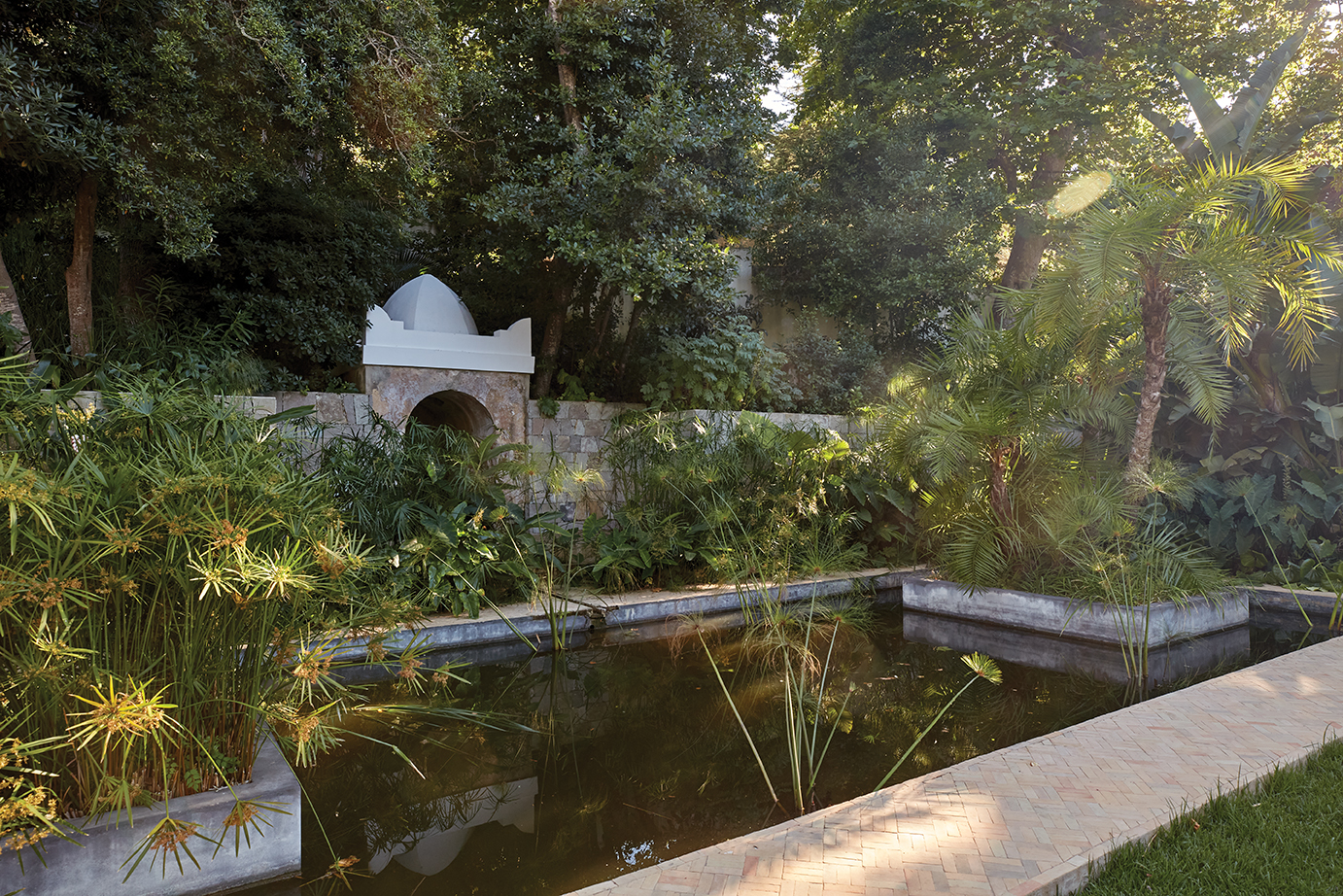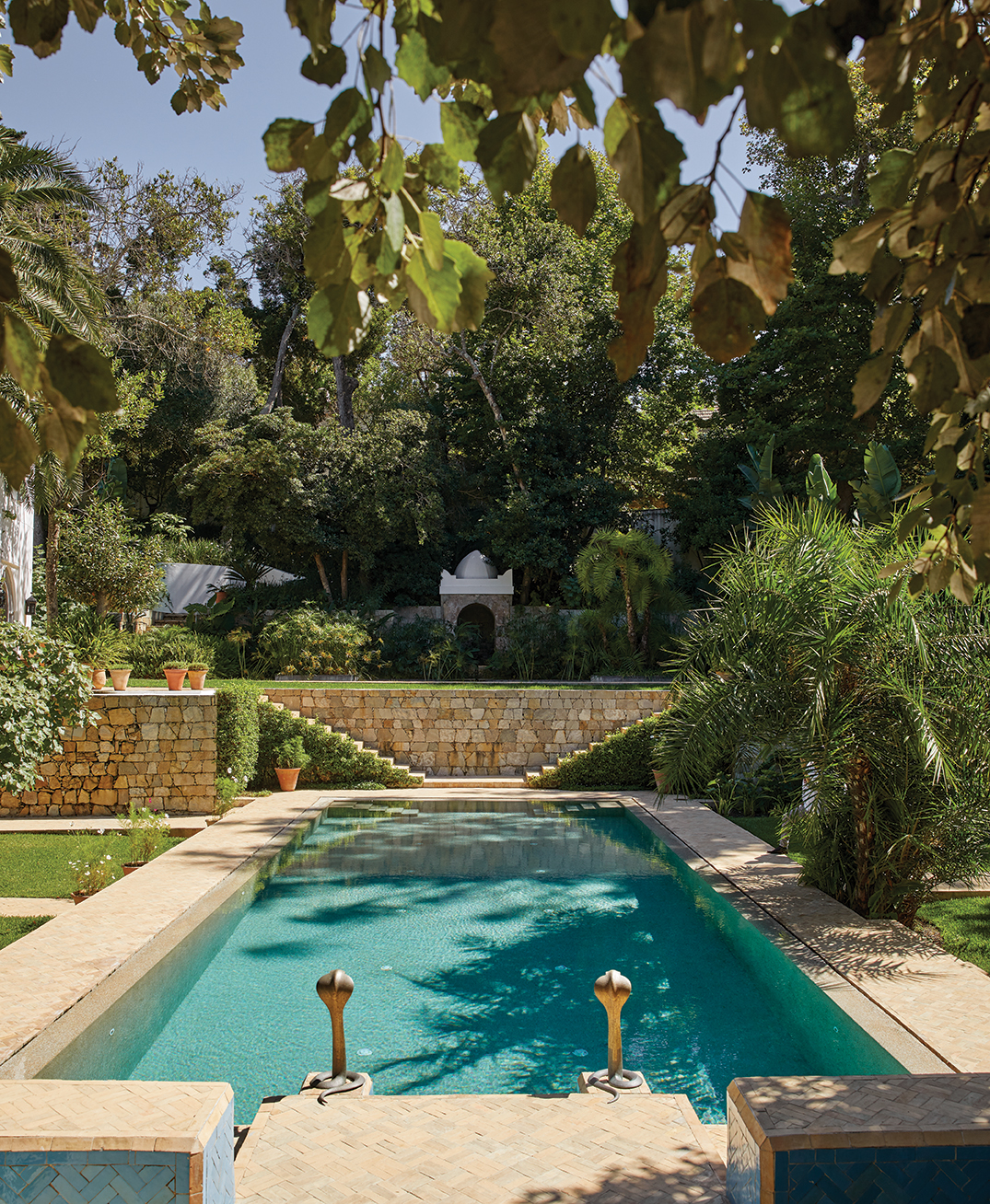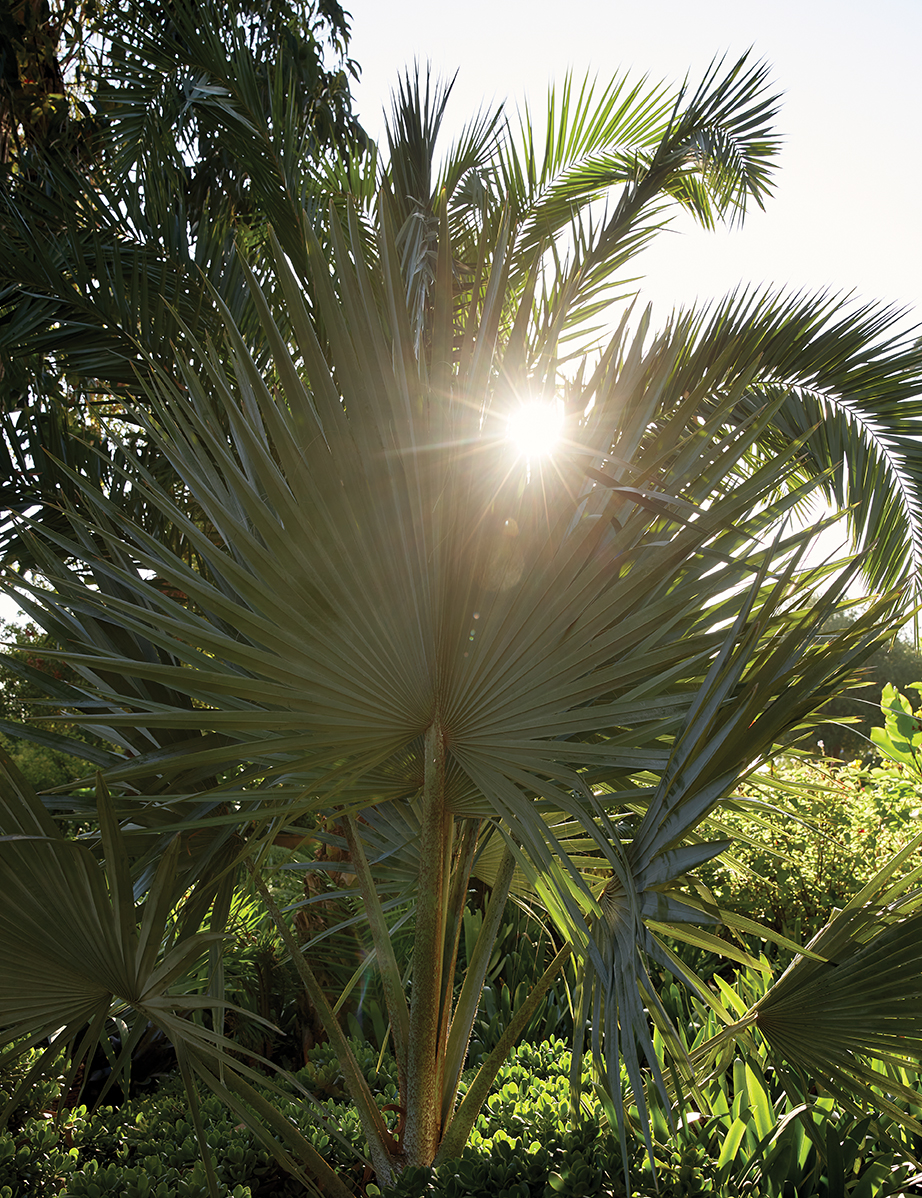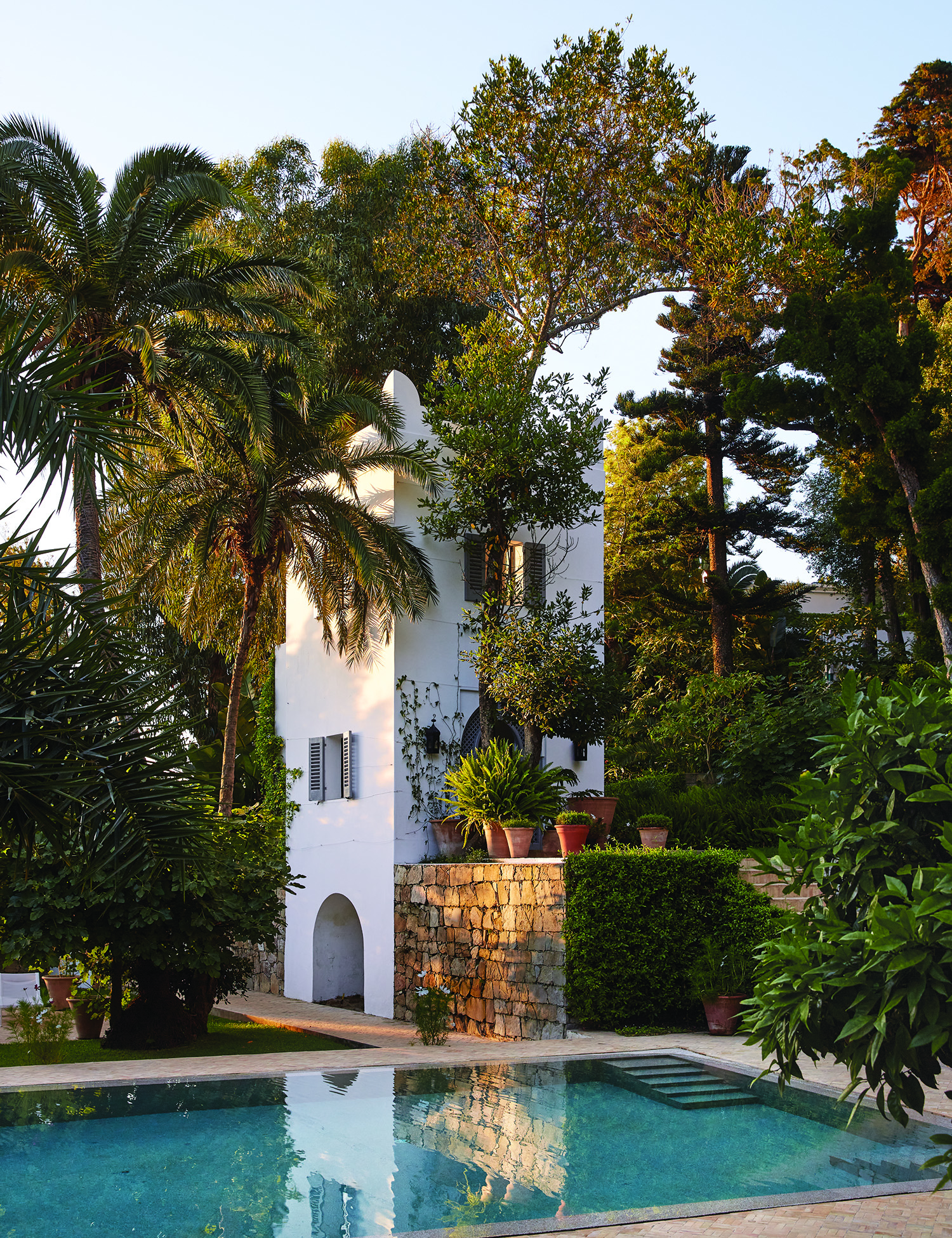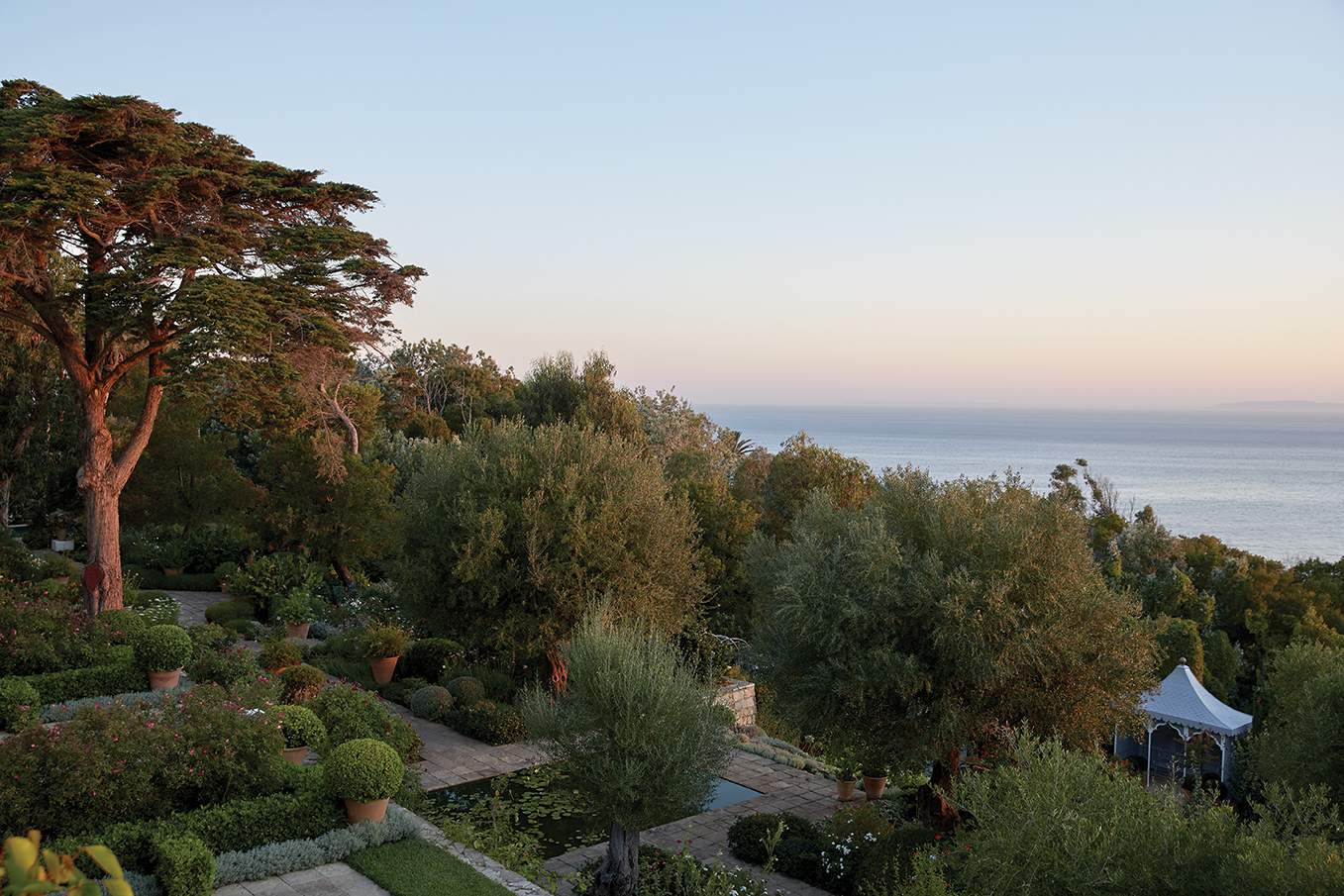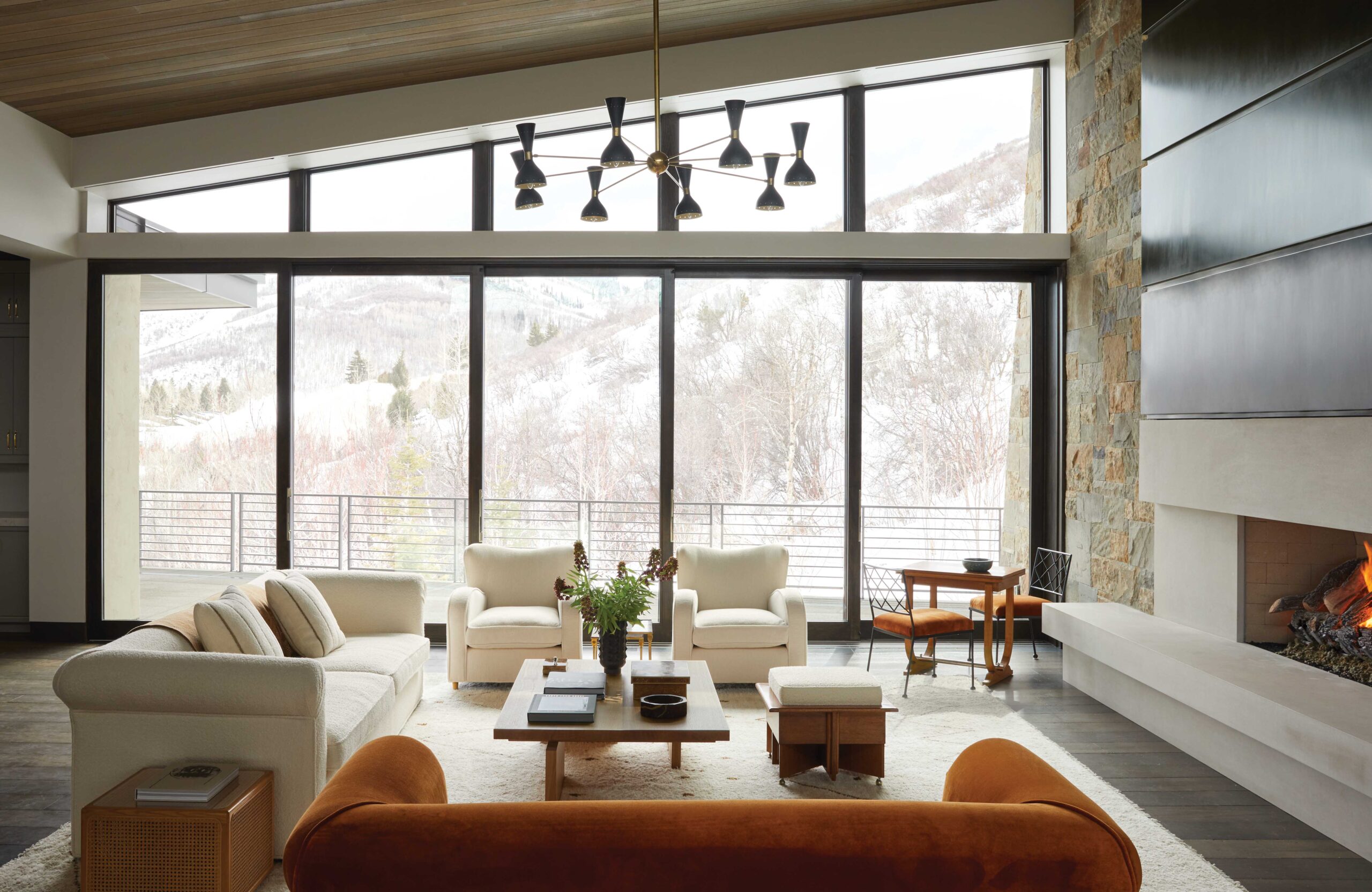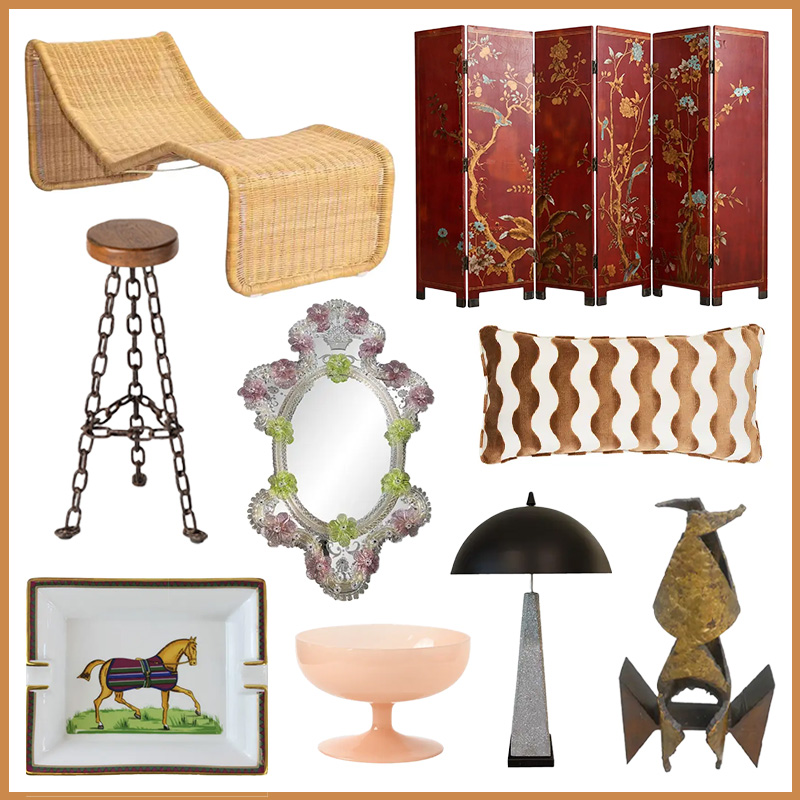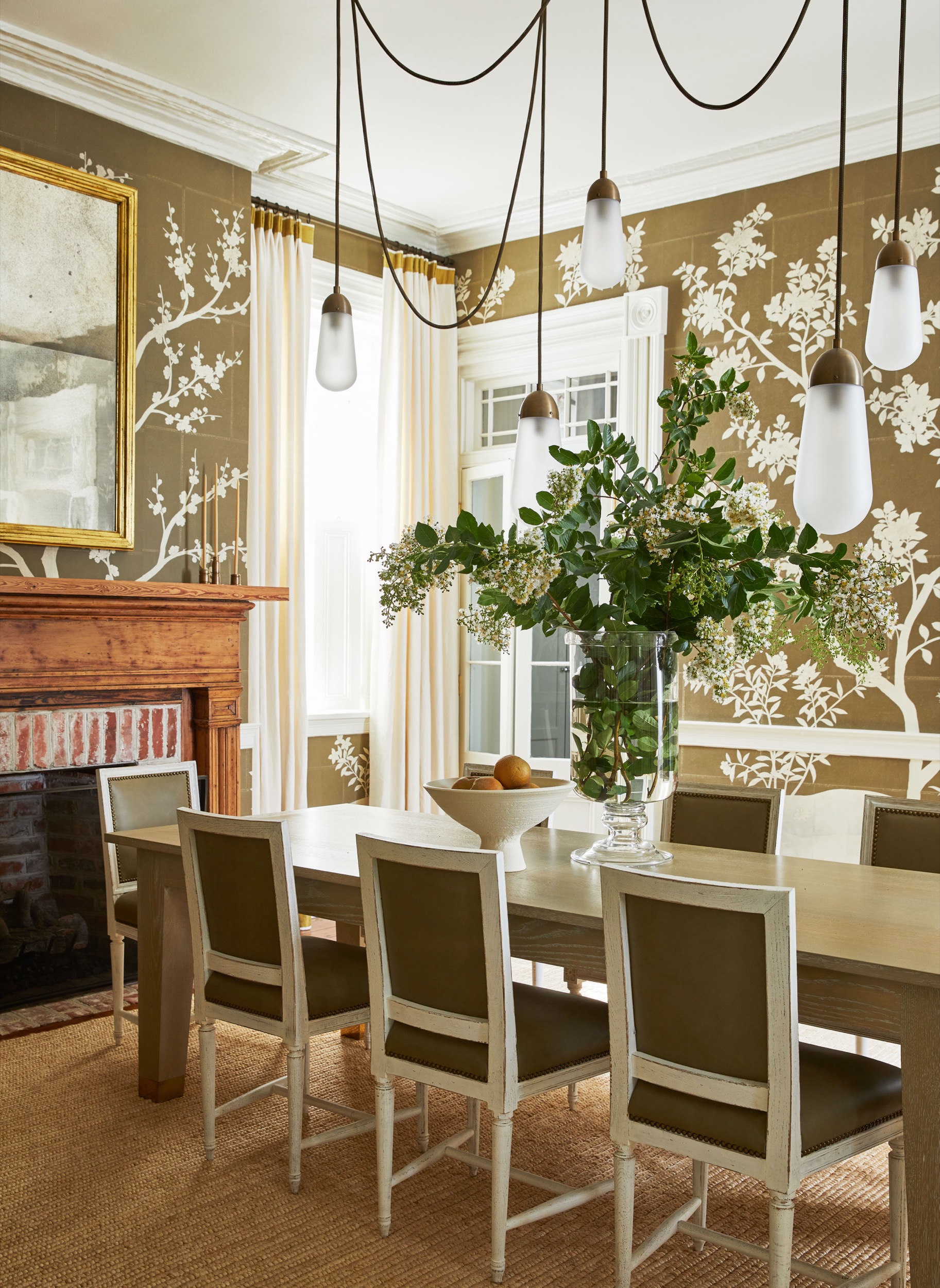Tangier, Morocco, could have almost been created with Veere Grenney in mind. The New Zealand– born designer, one of the great interpreters of the English style, is known for his embrace of high and low, order and abundance, the exquisite and the everyday. He mixes disparate and even opposing elements in rooms that somehow emerge enchanting to the eye, abundant in color and pattern, always beautiful yet never too grand. The Moroccan town where he maintains a retreat is, similarly, an amalgam of intriguing juxtapositions. With its stunning natural setting overlooking the Strait of Gibraltar, pockets of aristocratic refinement and luxury and a downtown with an appreciation for raffish, bohemian excess, how could Grenney not succumb to its charms?
For more than a century, Tangier’s year-round warmth, slightly dissolute atmosphere, and amiable acceptance of all nationalities and inclinations have attracted everyone from poets and writers (Paul Bowles, George Orwell and Tennessee Williams, among them) and avant-garde artists to Oxford dons and pleasure-seeking youths. It seems only natural that Grenney has managed to encapsulate all of its contradictions in a garden that is both pure Tangier and pure Veere: dramatic yet welcoming, lush yet ordered, colorful yet serene.
“I first came to Tangier in 1972, when I was 22 and leading my hippie life, dressed in my hippie garb,” the designer recalls. He was welcomed by the ex-pat community, and the renowned London antiquaire and style-setter Christopher Gibbs became a particular friend. “I had the idea of getting a beautiful house with columns, surrounded by wonderful palm trees,” says Grenney. “It was a fantasy, but one that stayed with me. In the 1990s, I started coming back. I must have been happy here because I kept doing it. In 2010, I sold a flat I had in Brazil, and I thought, Why not a house in Tangier?”
See More of Veere Grenney’s Garden
The place he found was a tiny stucco cottage built in the 1930s. Though derelict, it came with a history. It had been owned by Marguerite McBey, the widow of a Scottish artist, who installed Joe McPhillips, the head of Tangier’s American School, on the property. “It was a well-known house,” says Grenney, “because it was up in the mountains with amazing views, and in the same neighborhood as the king’s palace. There was a mystique about the house—mostly for drunken behavior,” he laughs. “When we started cleaning up the garden, we found all kinds of wine bottles.”
Grenney spent a year working on the house’s interior, but initially, he says, “I really didn’t consider the garden—I already had a lovely garden in the English countryside.” That is an understatement: His retreat in Suffolk is an 18th-century Palladian fantasy of a hunting lodge, previously owned by David Hicks, where Grenney crafted a renowned verdant escape. “But you can’t really have a beautiful house without a garden,” he admitted.
-
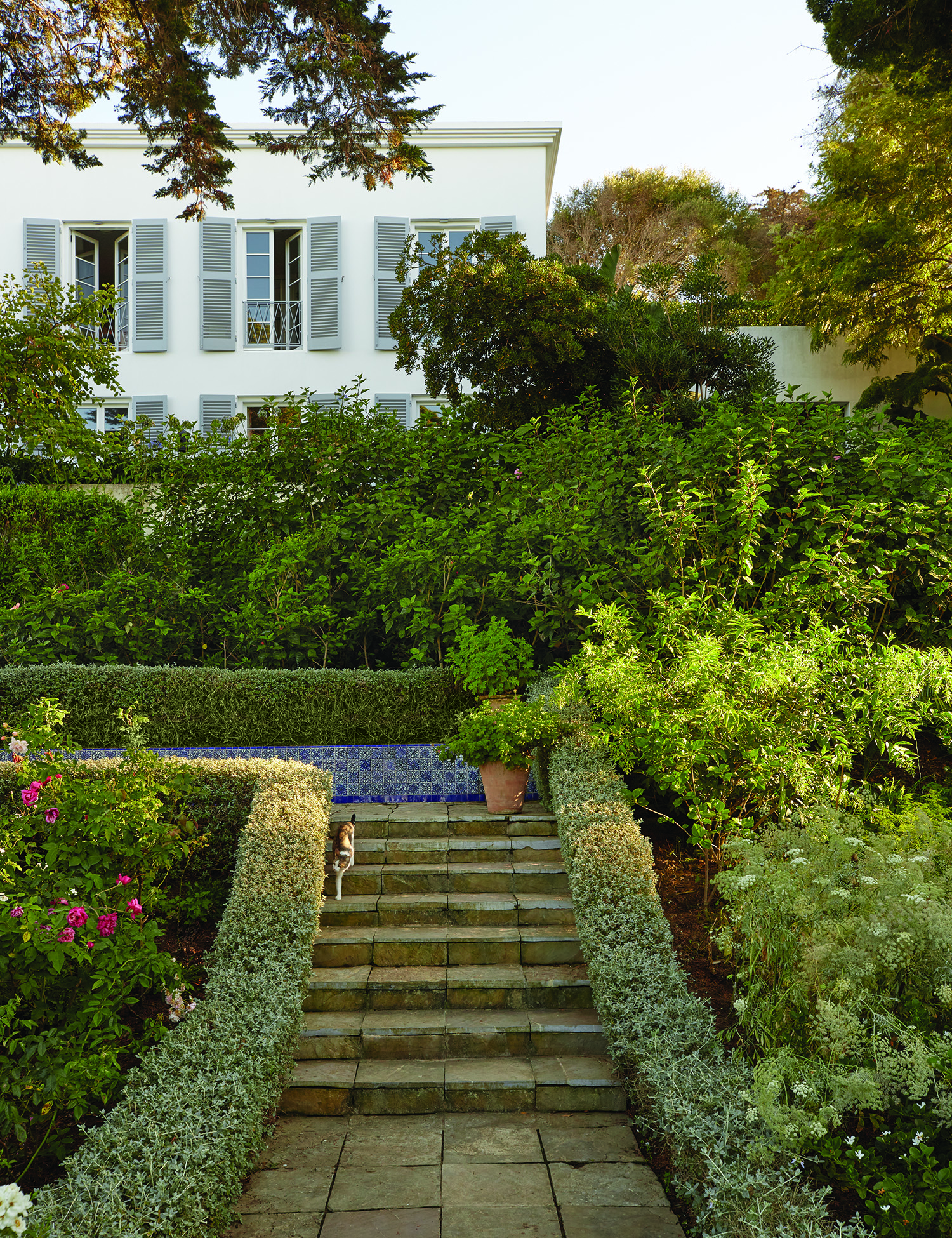
Stairs edged in a clipped hedge of Teucrium fruticans lead down the steep site to four additional terraces.
FRANCESCO LAGNESE -
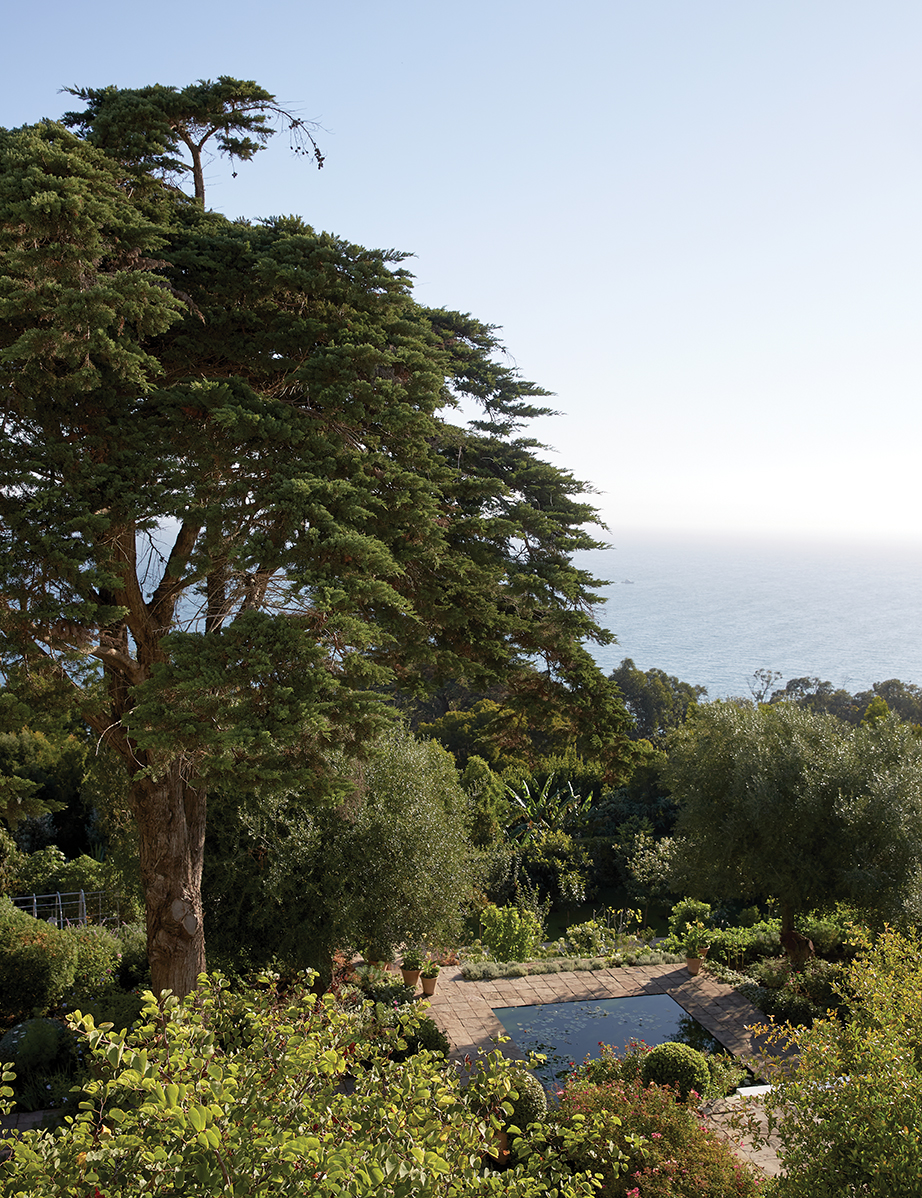
The view from the house, with terraces sheltered by a stately umbrella pine, includes the Mediterranean Sea beyond. The walkways and pool, which contains waterlilies and carp, were constructed with stone from a local quarry.
FRANCESCO LAGNESE
The project was daunting. Because the site was so steep, the only solution was to create a series of level terraces. But there were compensations: The garden faces north, so sun comes in from every direction. There were several beautiful established trees. The climate is mild, with no frost in winter. Plus, there was the blessing of three springs on the property. Italian architect Cosimo Sesti, Gibbs’s godson, helped with the design and built the pool house and small tower. Neighbor Umberto Pasti helped with the layout of the swimming pool, set amid lush palms. “The pool is very Hollywood with those bronze serpents,” Grenney says with a laugh. “The only thing missing is Elizabeth Taylor stepping out of the water.”
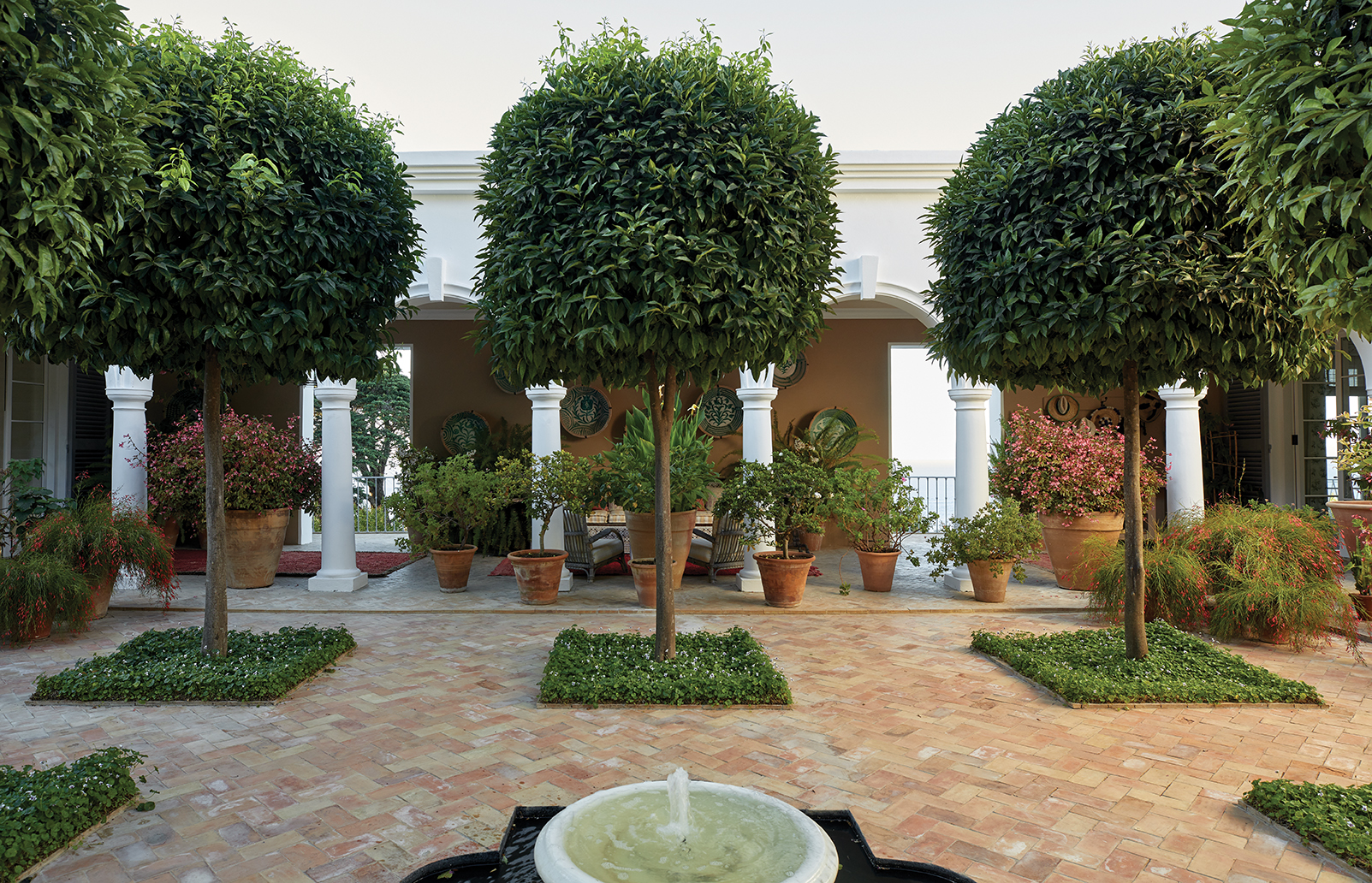
The interior courtyard features clipped orange trees underplanted with violets arrayed around a small fountain that was found in the medina. The small pots hold gardenia standards, and the large ones contain abundant begonias and Russelia. “The orange trees give off an unbelievable scent in April,” says the designer.
FRANCESCO LAGNESEAt first, “I was stupid enough to think I wanted an English herbaceous border,” the designer admits. But on the advice of landscape architect Christopher Masson, who had experience with gardens in Spain, Grenney instead embraced more Mediterranean plants. “Now the garden is full of canna lilies, plumbago, roses—all the plants my mother loved,” he says. “I was thrilled to discover I could have jacaranda trees. And begonias, which I had been so rude about for years, are wonderful here. They grow with Amazonian abandon. I can’t get enough of them.”
-
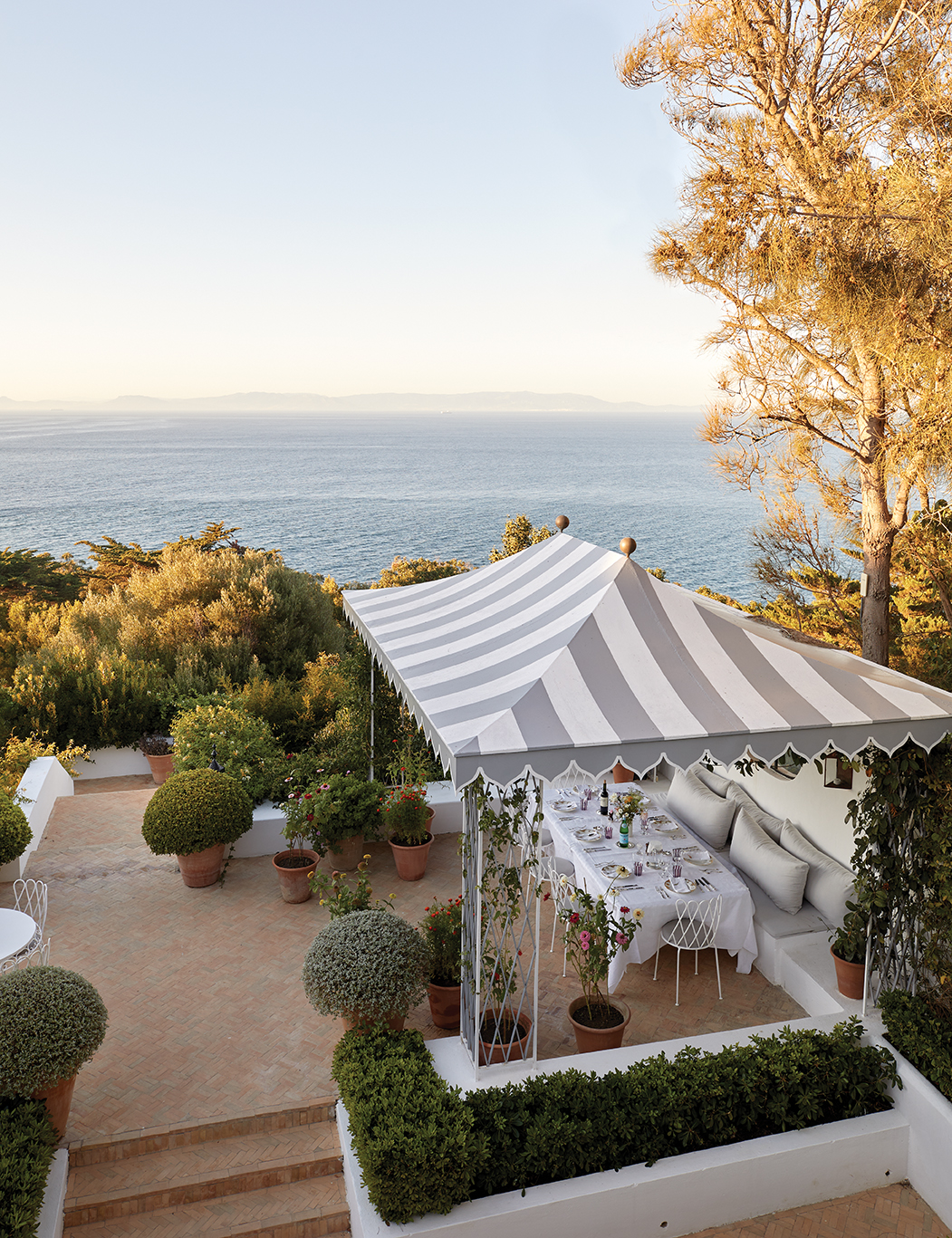
The dining pavilion provides views of the Strait of Gibraltar, the mouth of the Atlantic and as far as the Trafalgar lighthouse in Spain. The gaily stripe-painted tin ceiling is a necessity since, the designer says, “Tangier, like Greece, has a heavy dew at night.”
FRANCESCO LAGNESE -
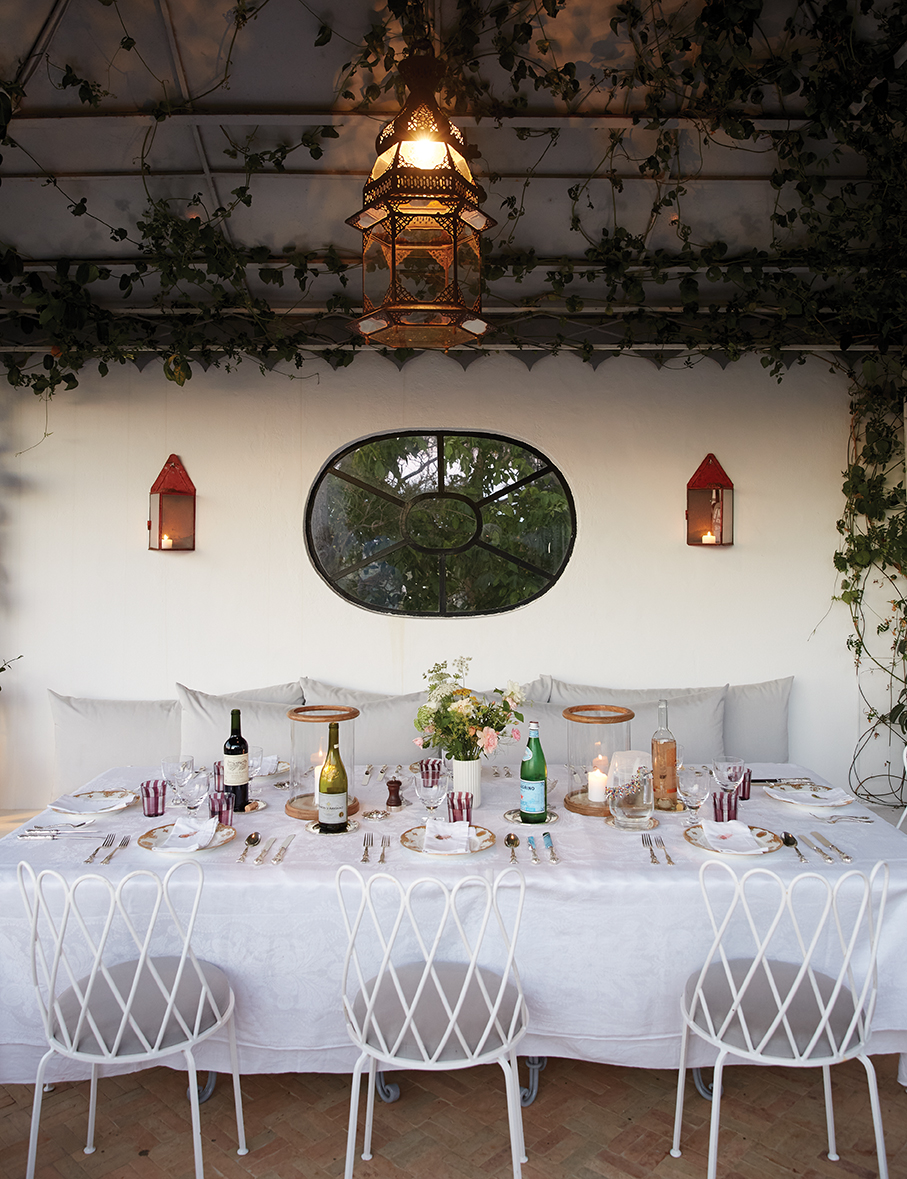
The metal dining chairs were made locally, inspired by a 1950s original; the plates were a steal from a Christies auction of the Newport, Rhode Island, estate of Nancy Drexel. “The dinnerware is the grandest set you’ll ever see,” Greeny says with a laugh. “But the price was a joke.”
FRANCESCO LAGNESE
The end result creates a feeling of abundance barely kept in check by the precise geometry of the walkways, ponds and the repeated ziggurat stairs. The garden is English in its order and clarity, exotic in its color and exuberance. Precisely clipped standards of orange trees and potted balls of pittosporum contrast with the wild and woolly olive trees and the sweep of the branches of the umbrella pines and monkey puzzle trees against the blue sky. “I love it more and more,” says Grenney. Next year, he plans to stay for a more extended period—if he can bear to keep away from his home in Sussex, that is. “Now,” he says, “I am torn between two passions.”
This story originally appeared in the Spring 2022 issue of FREDERIC. Click here to subscribe!
